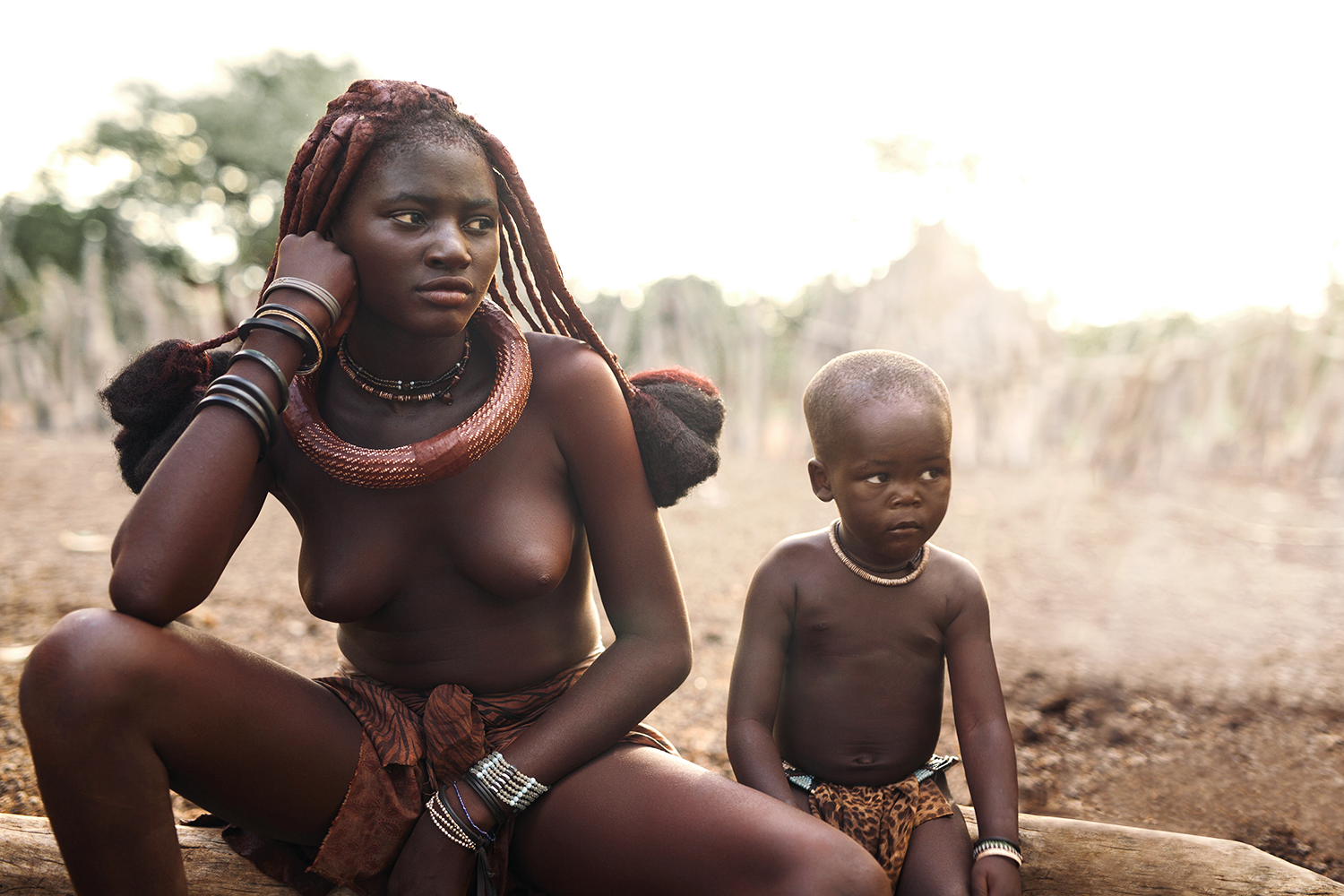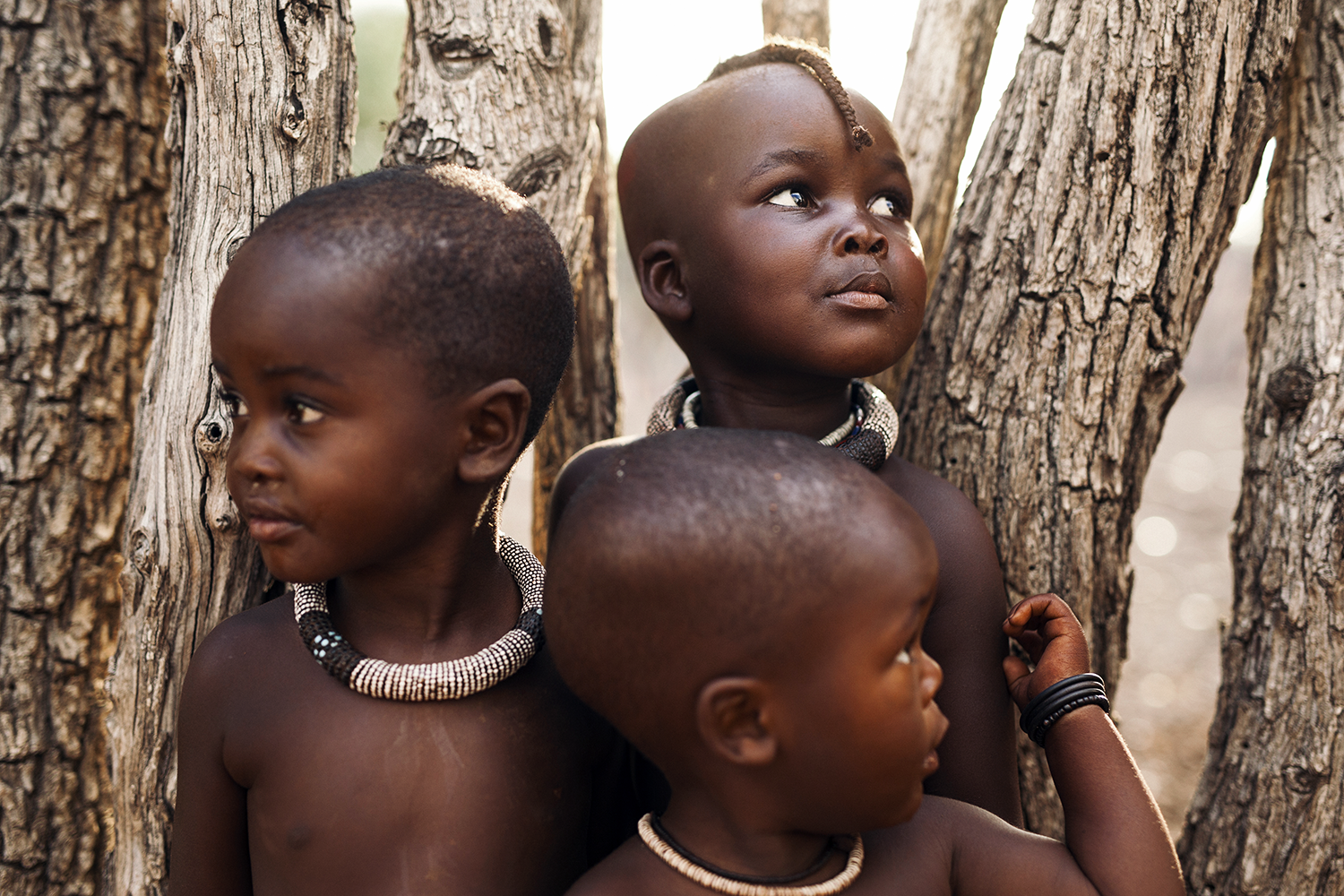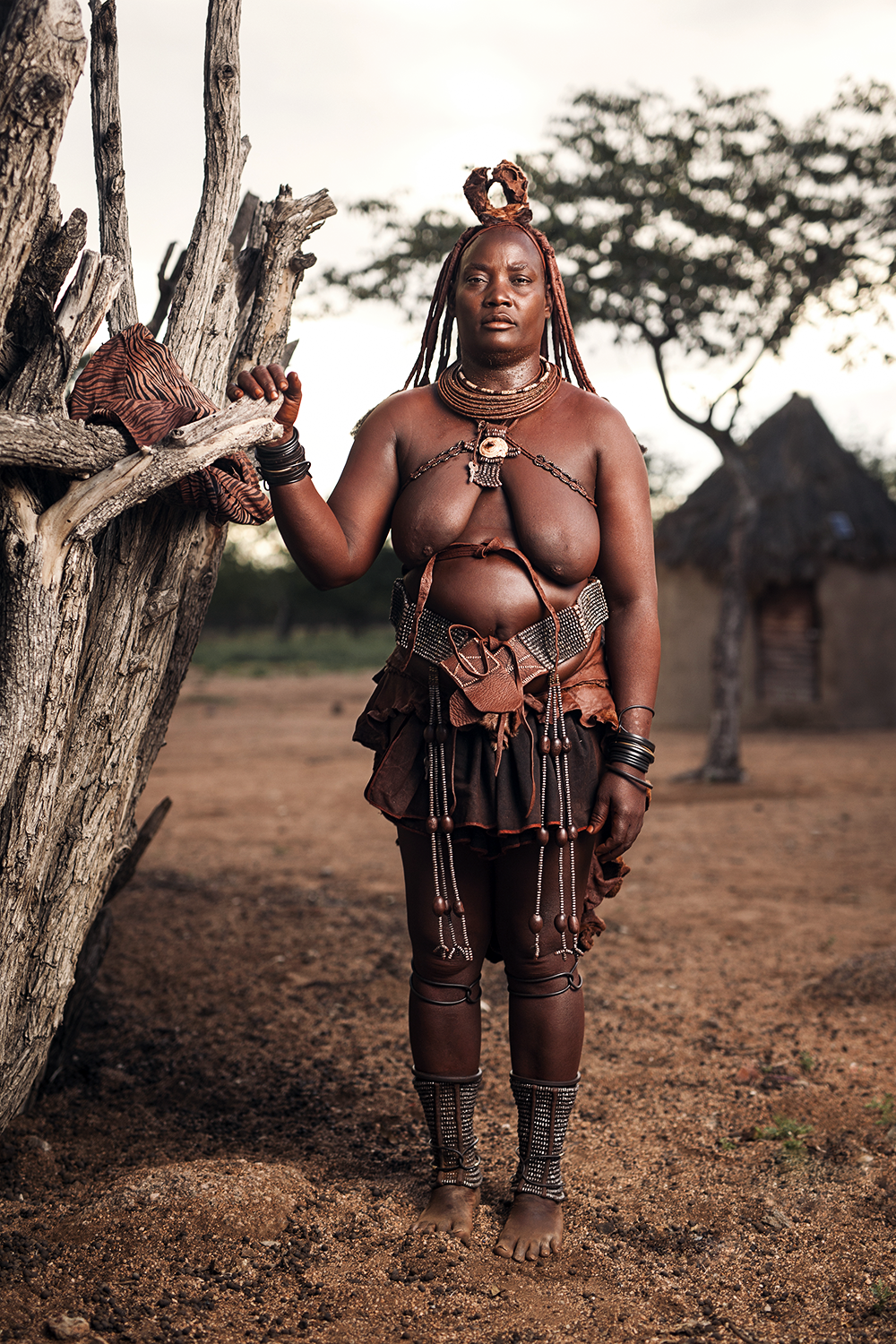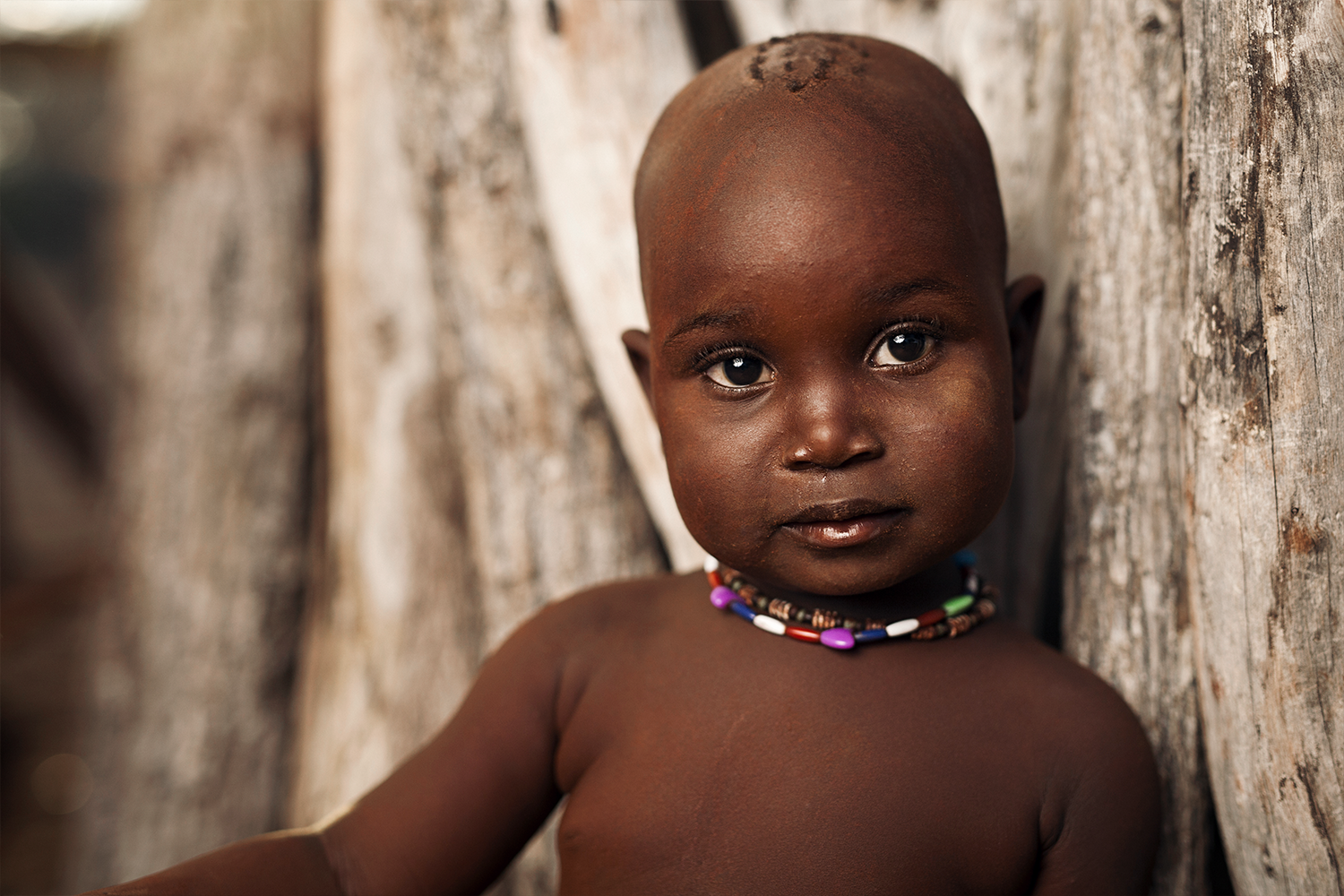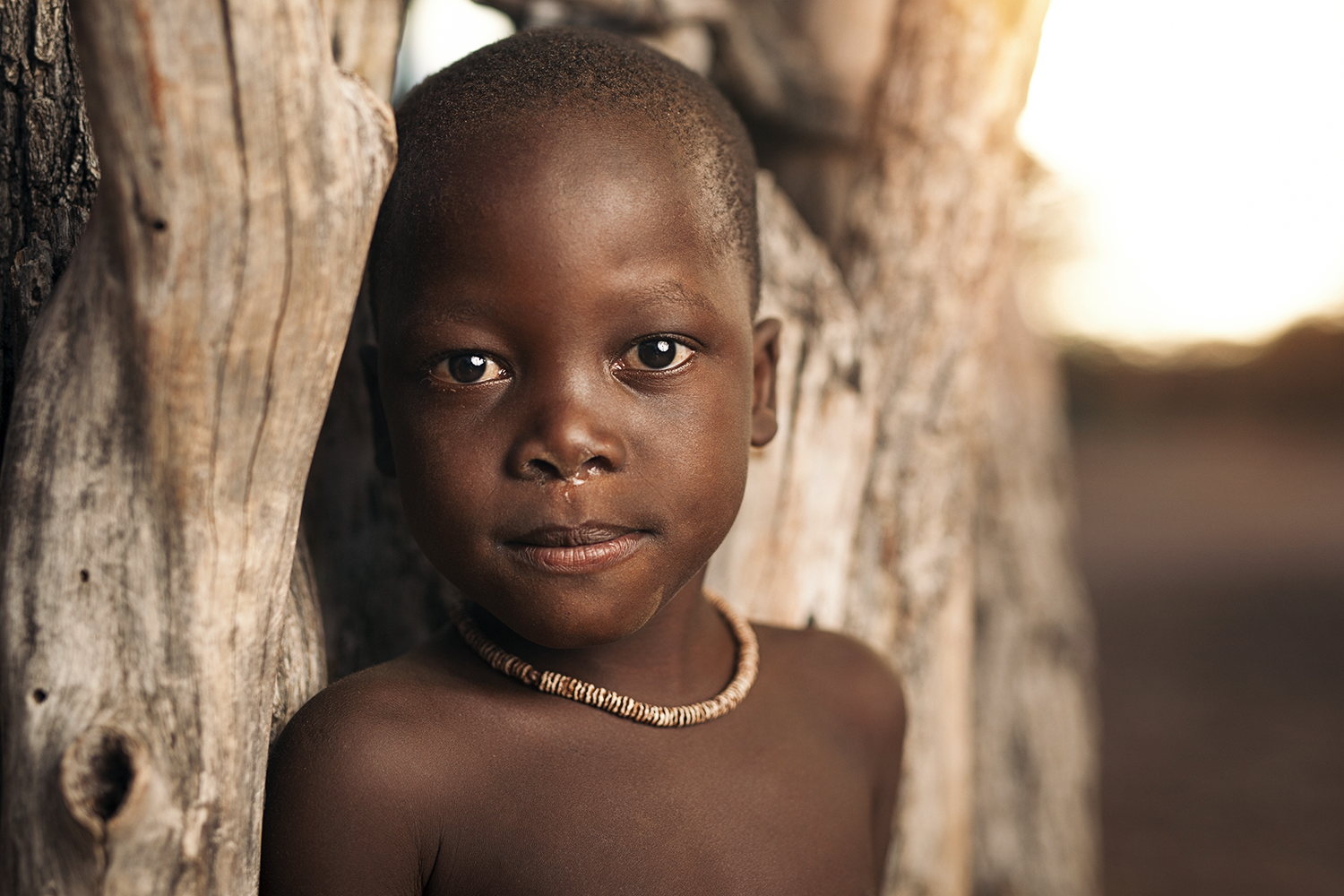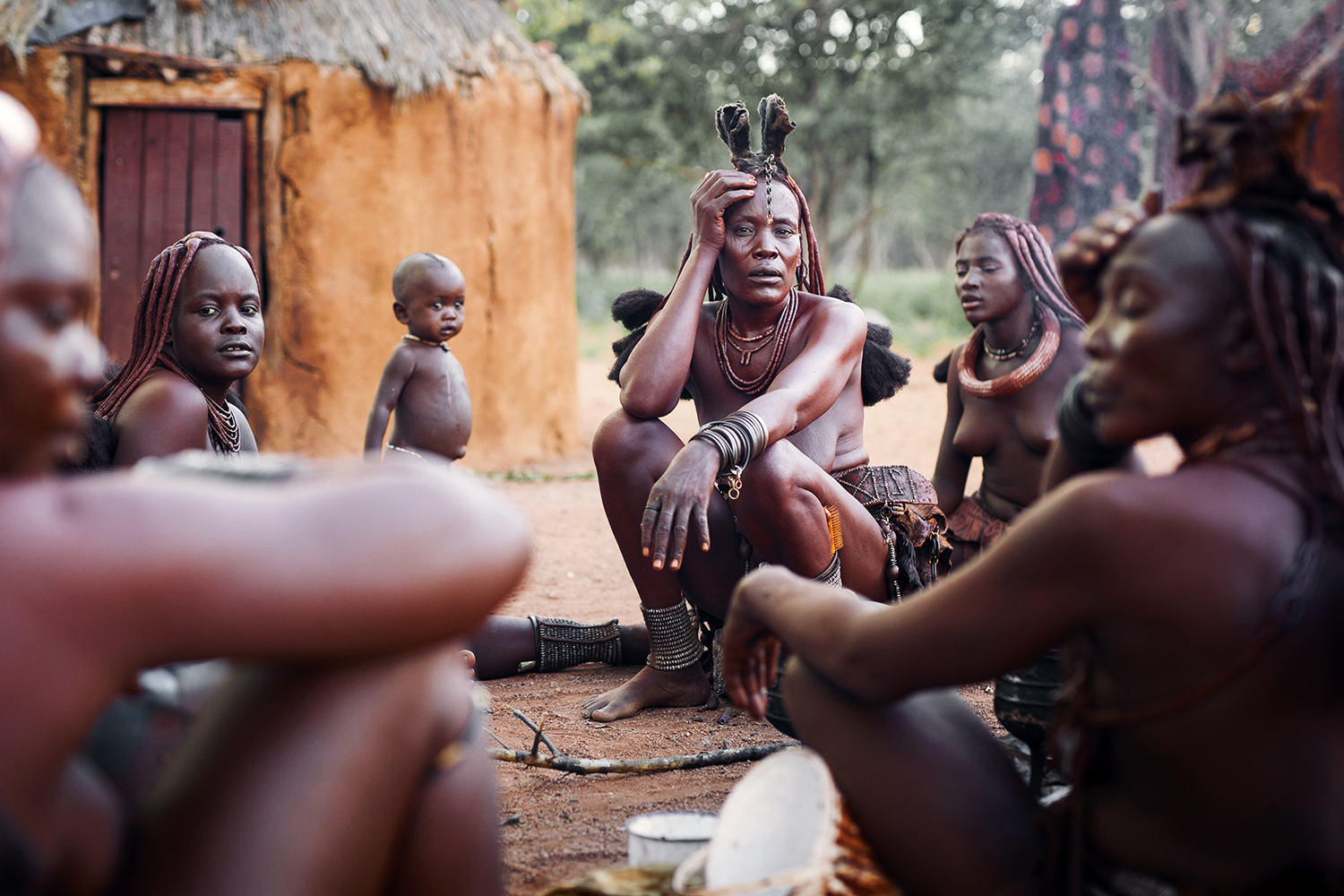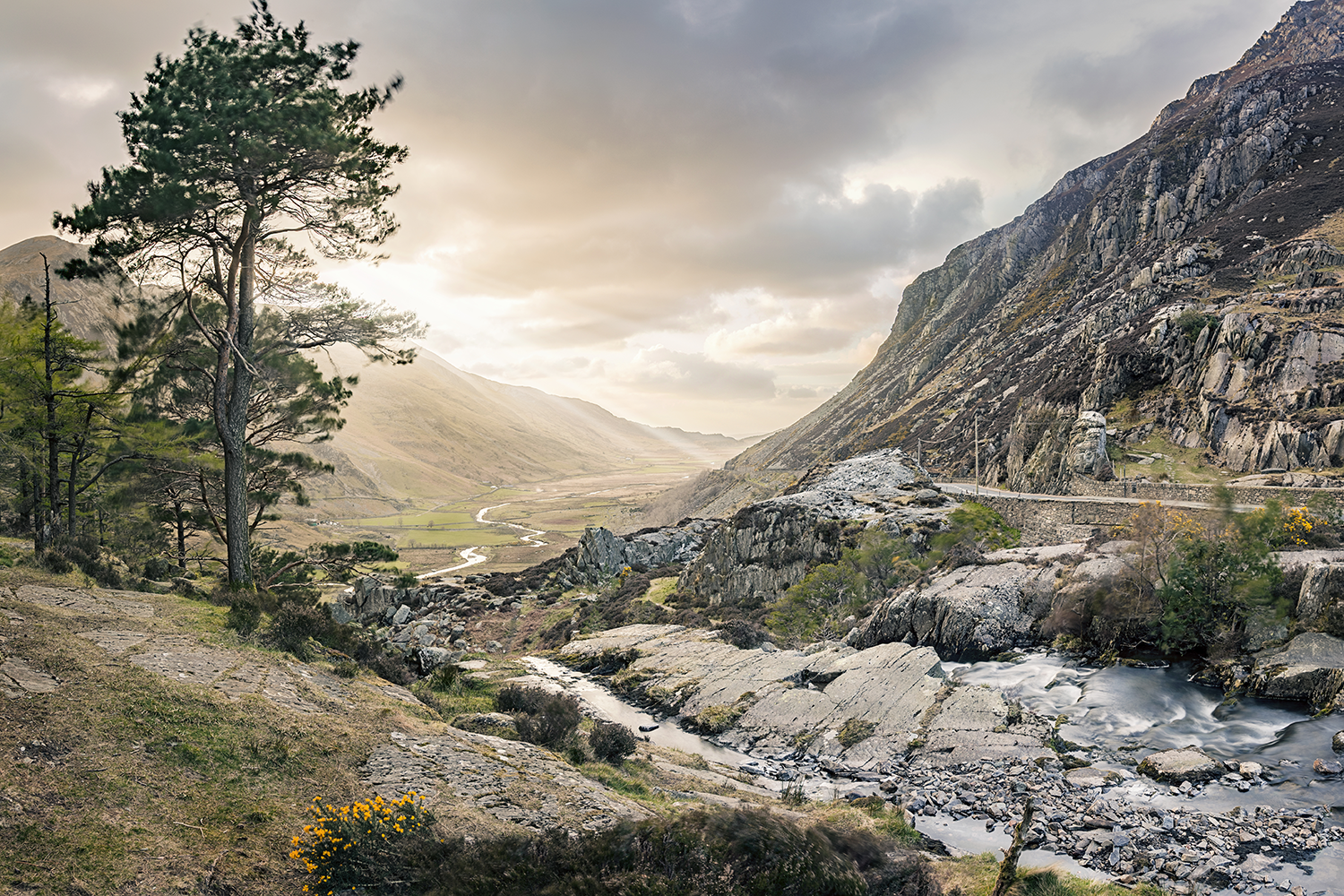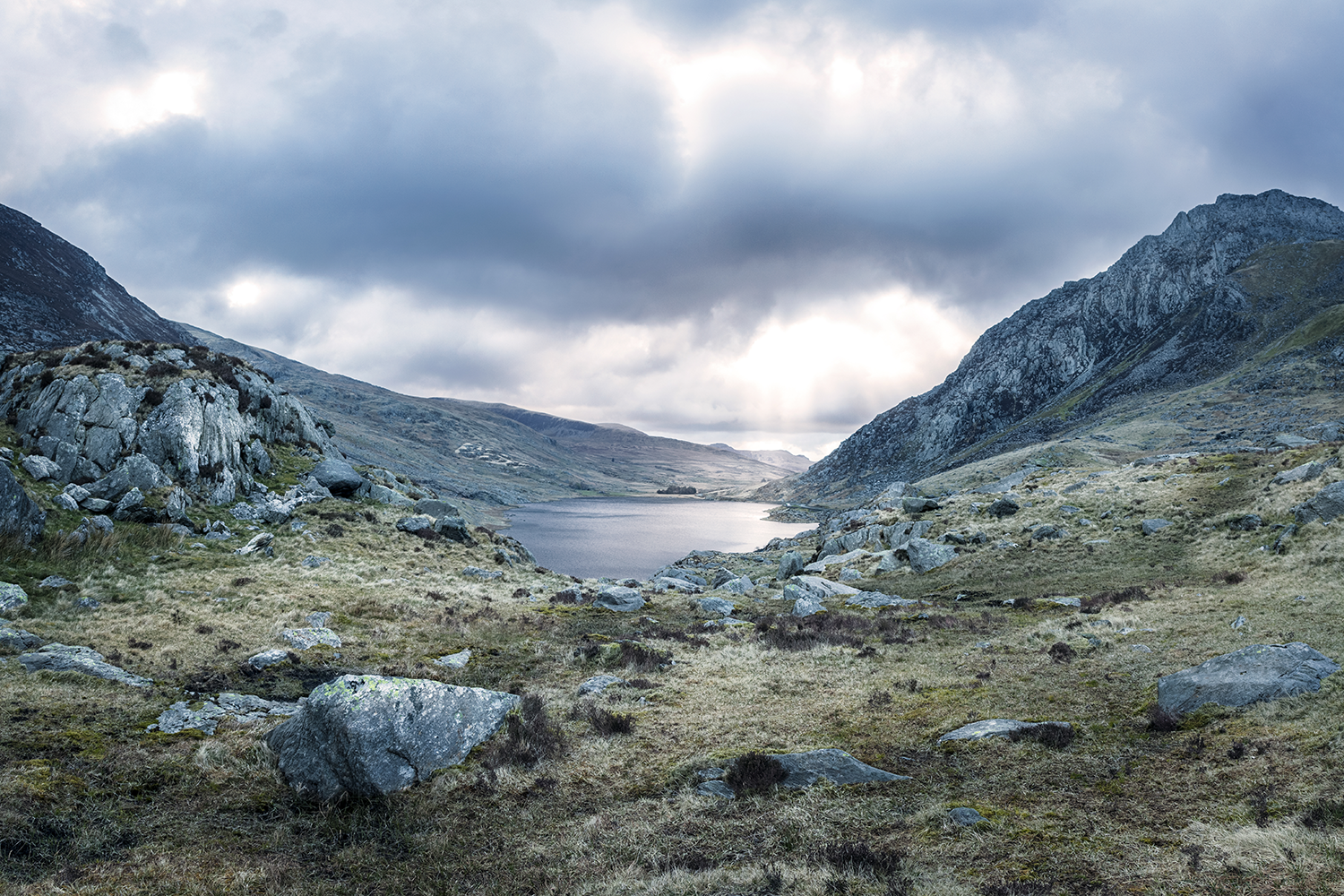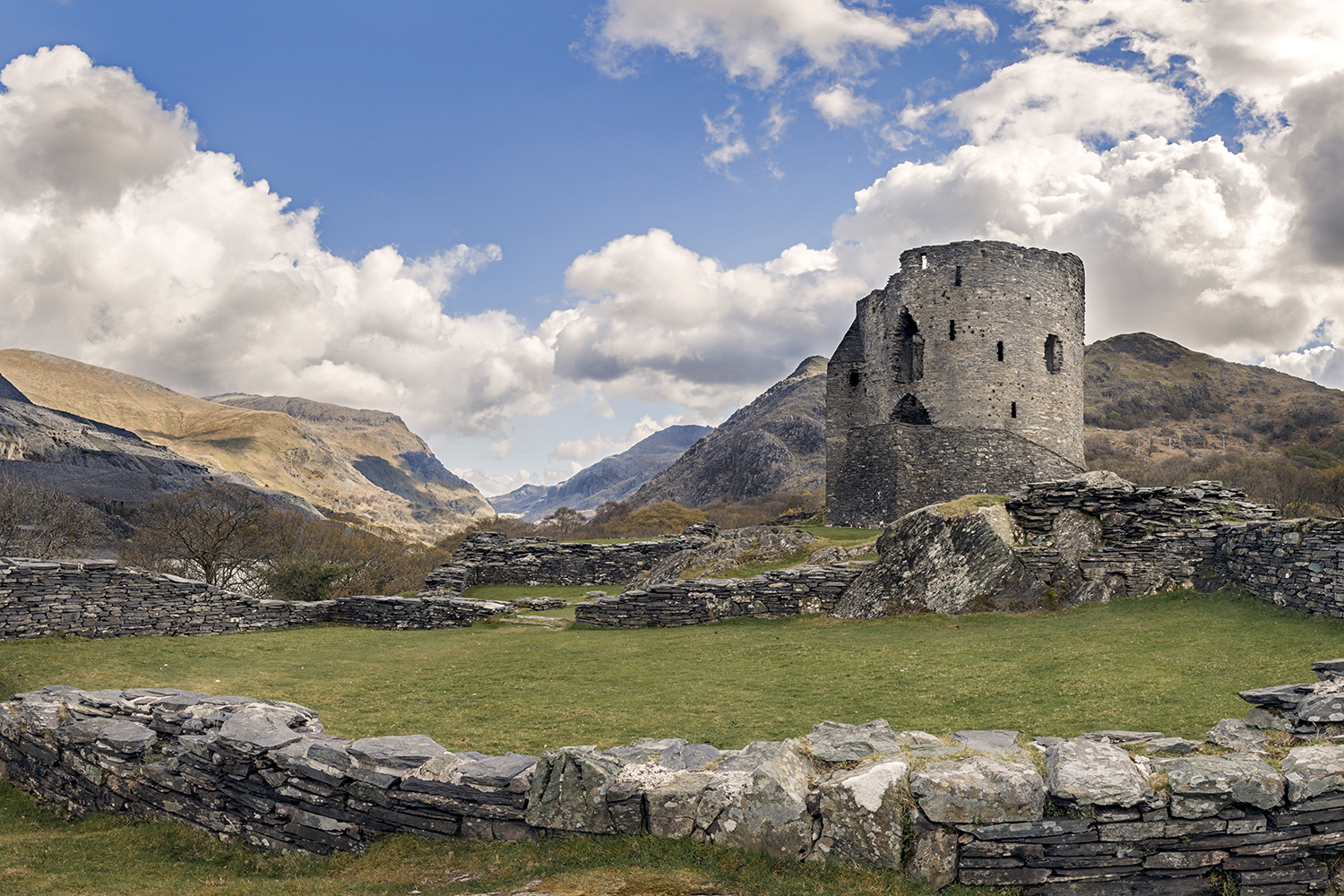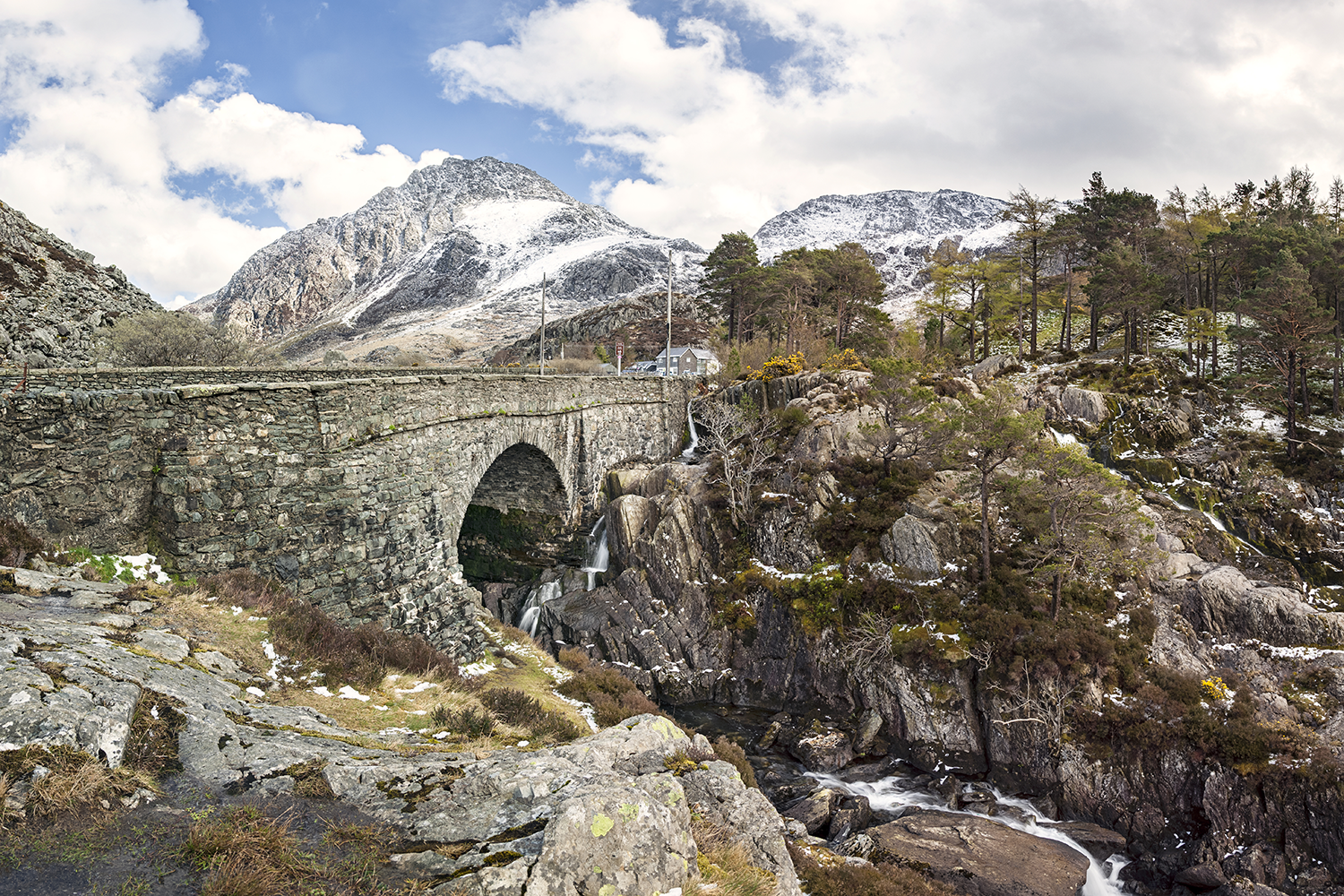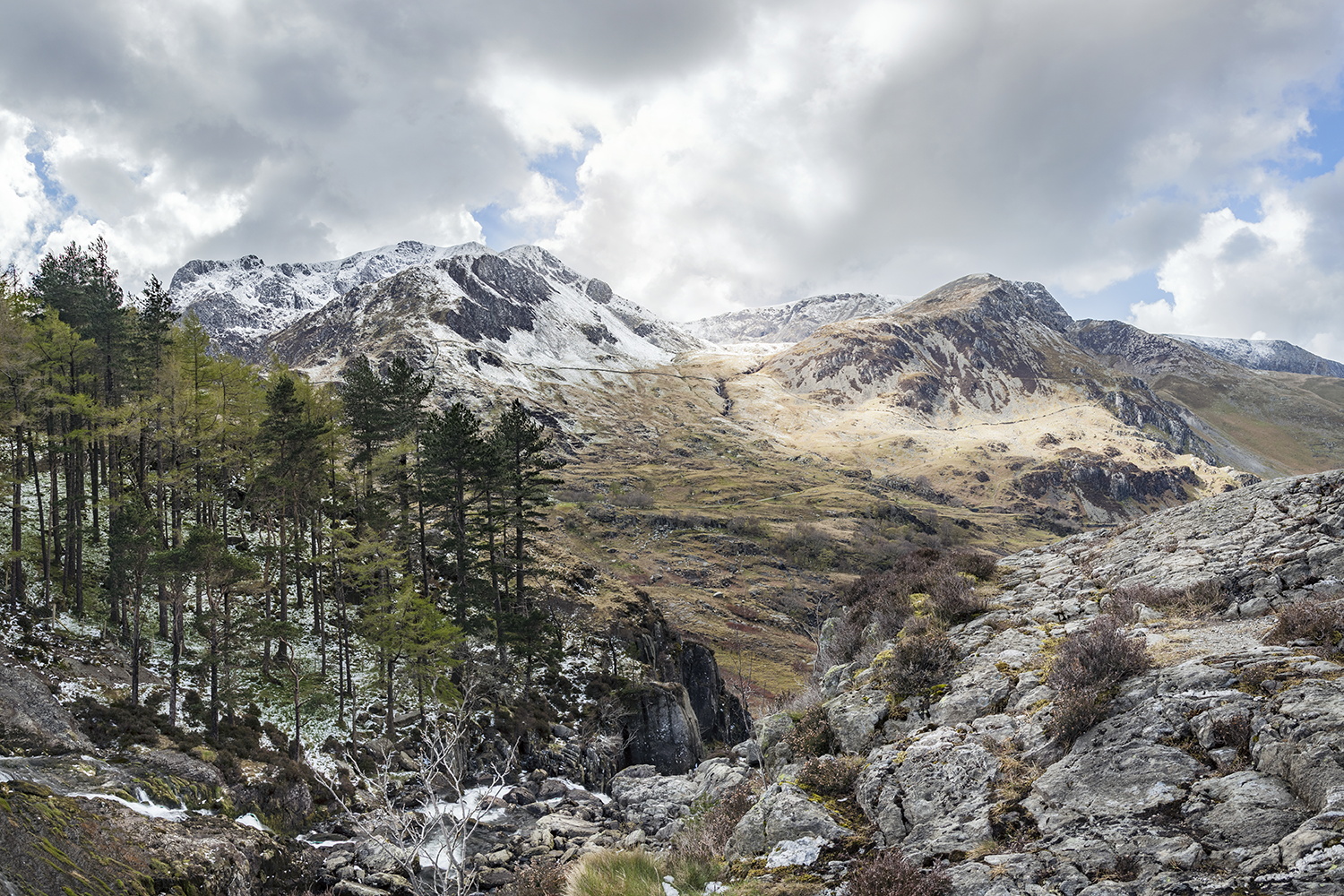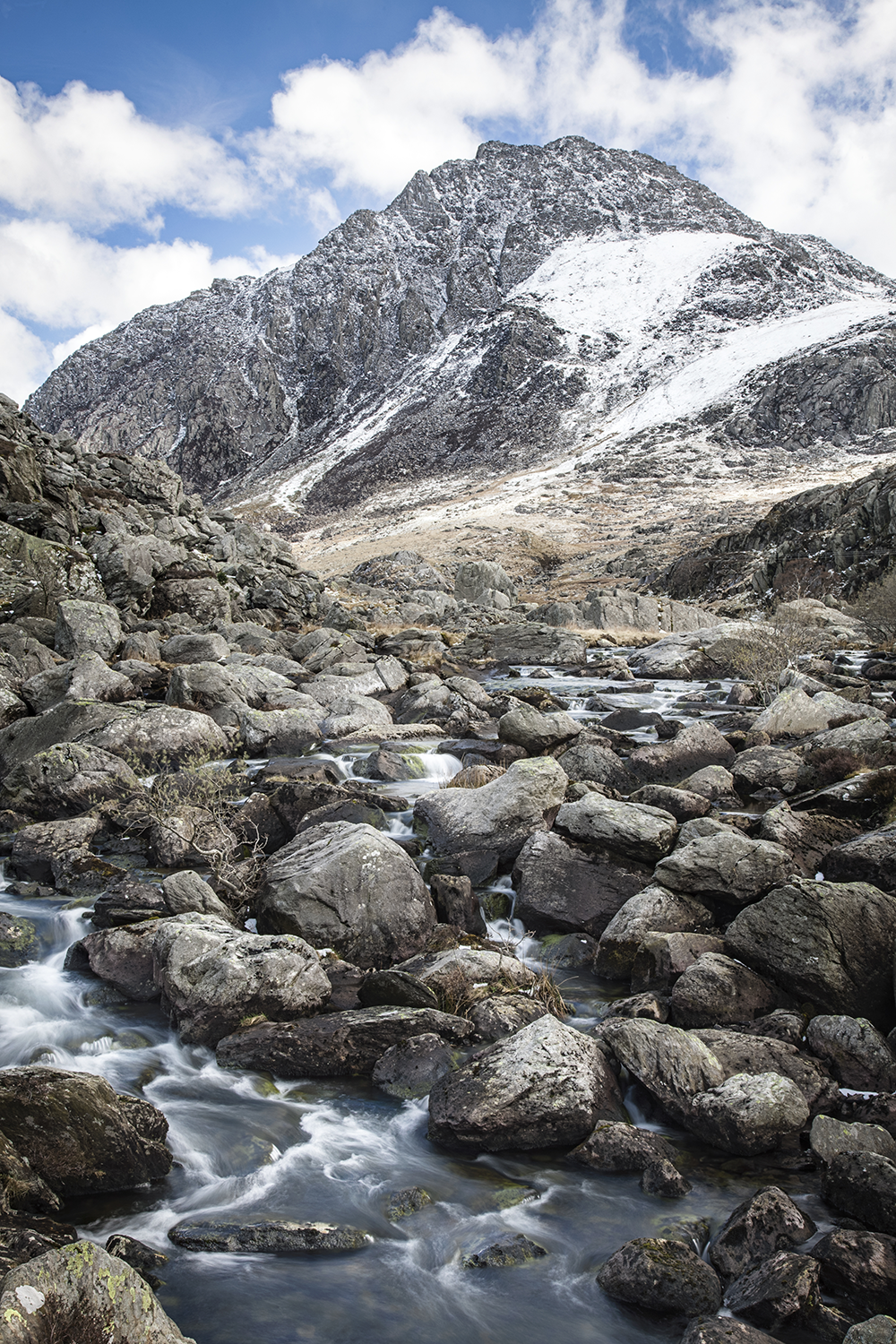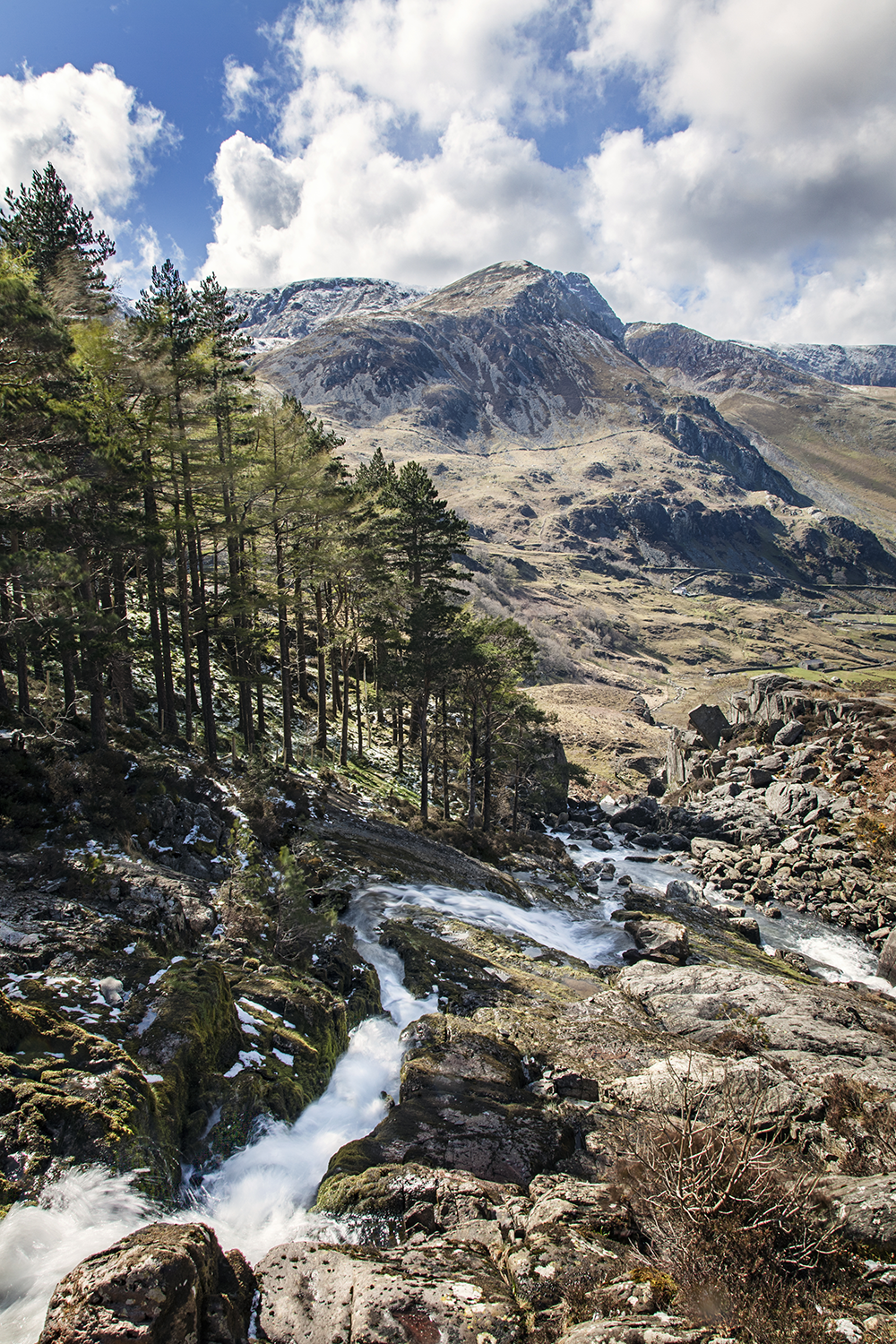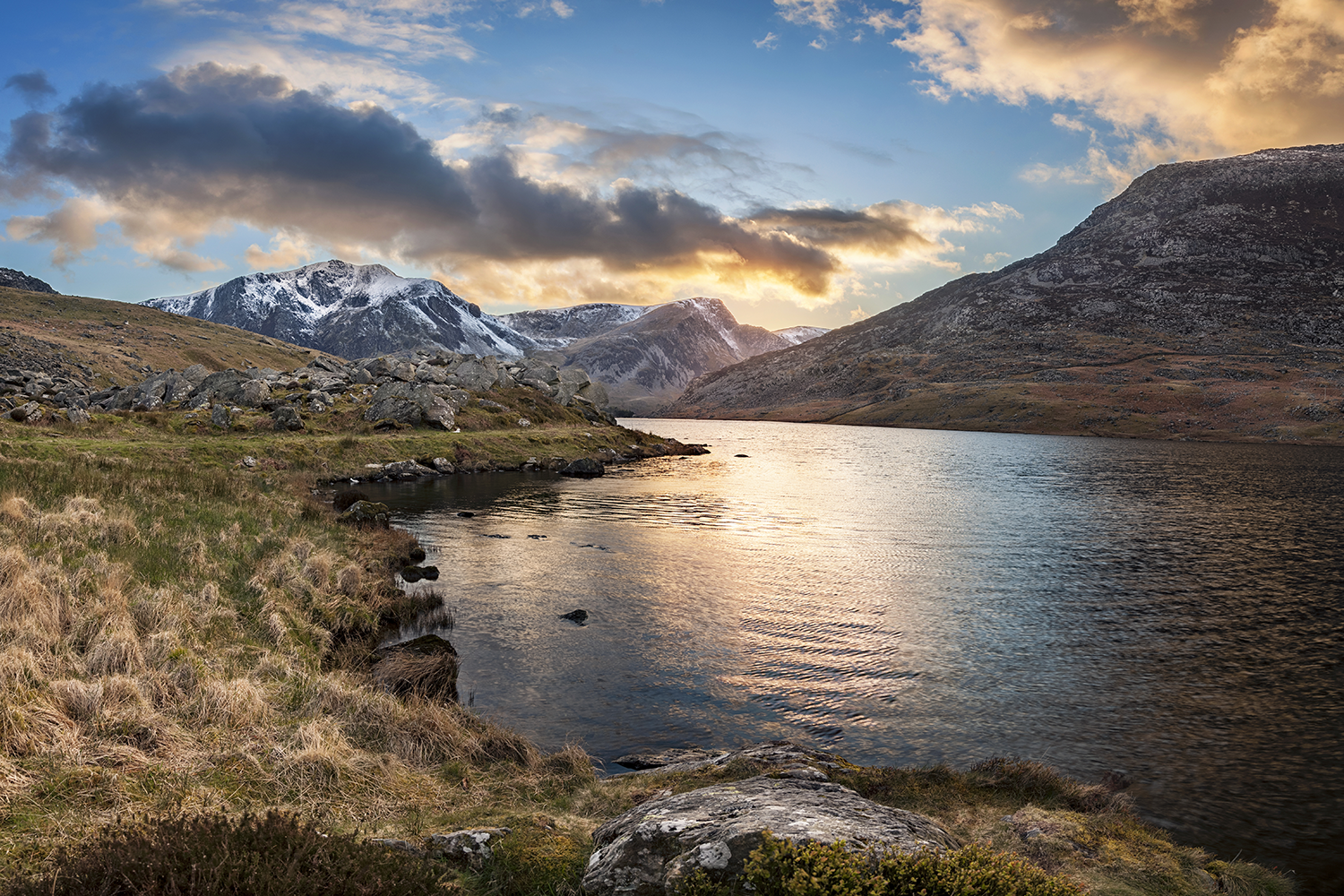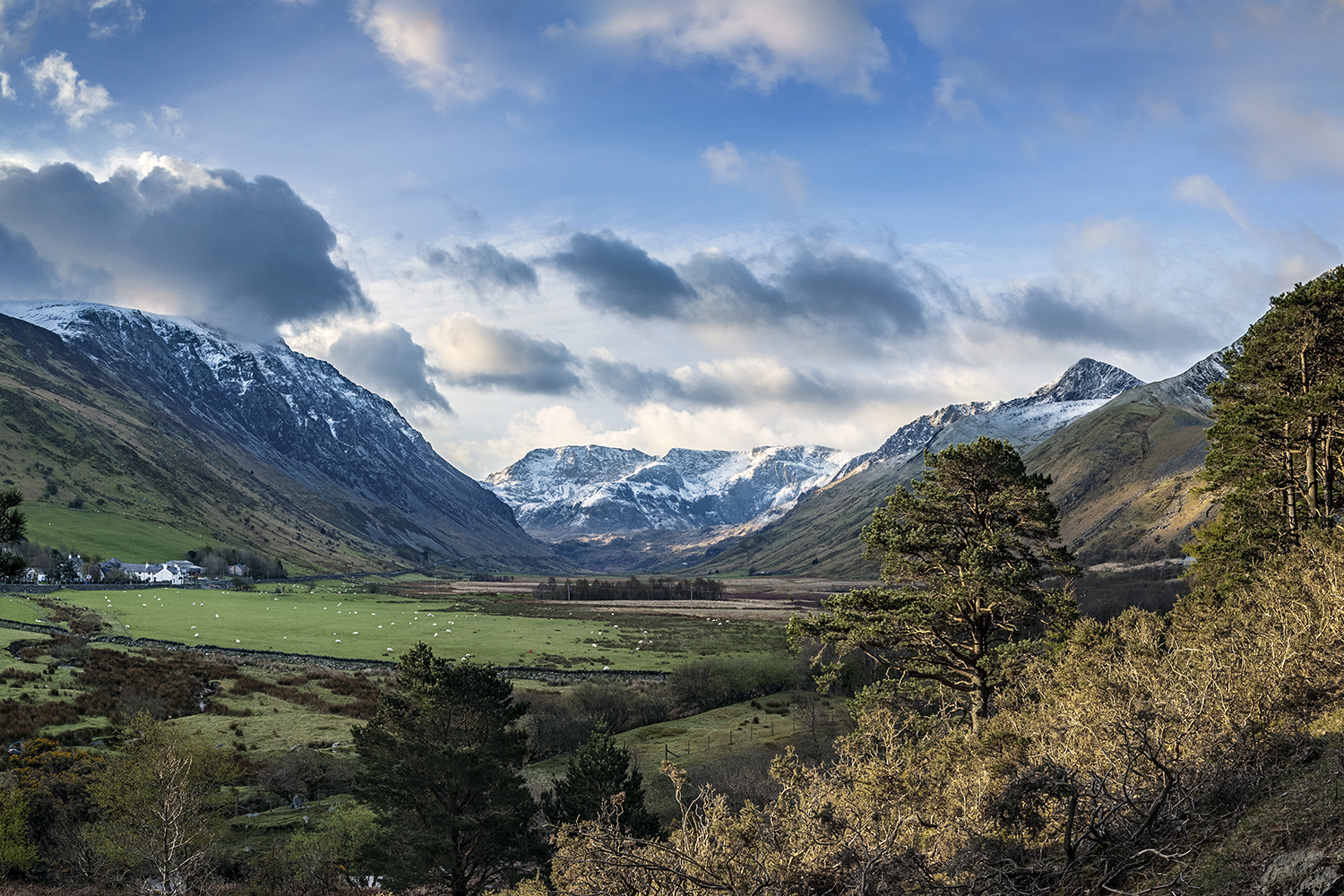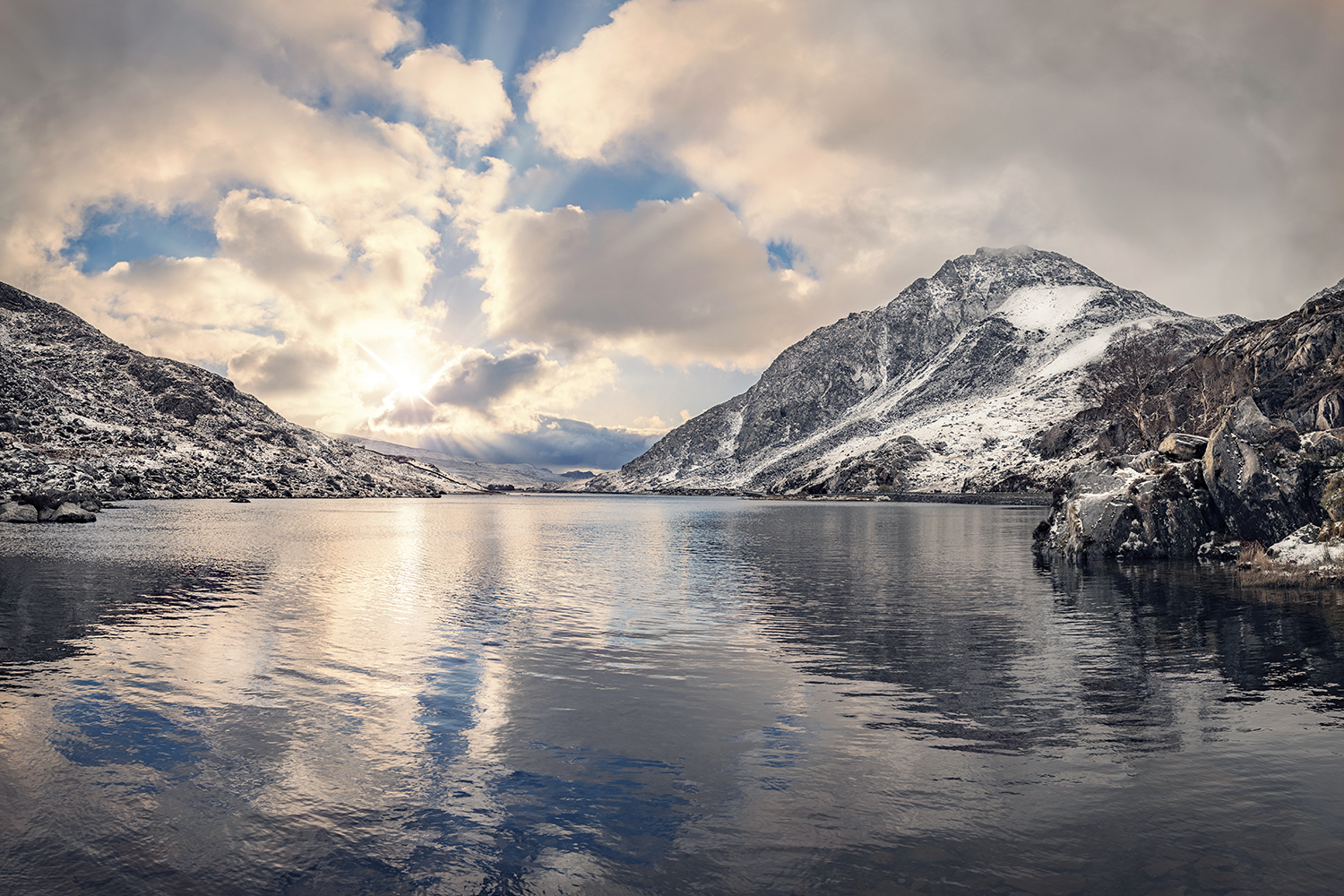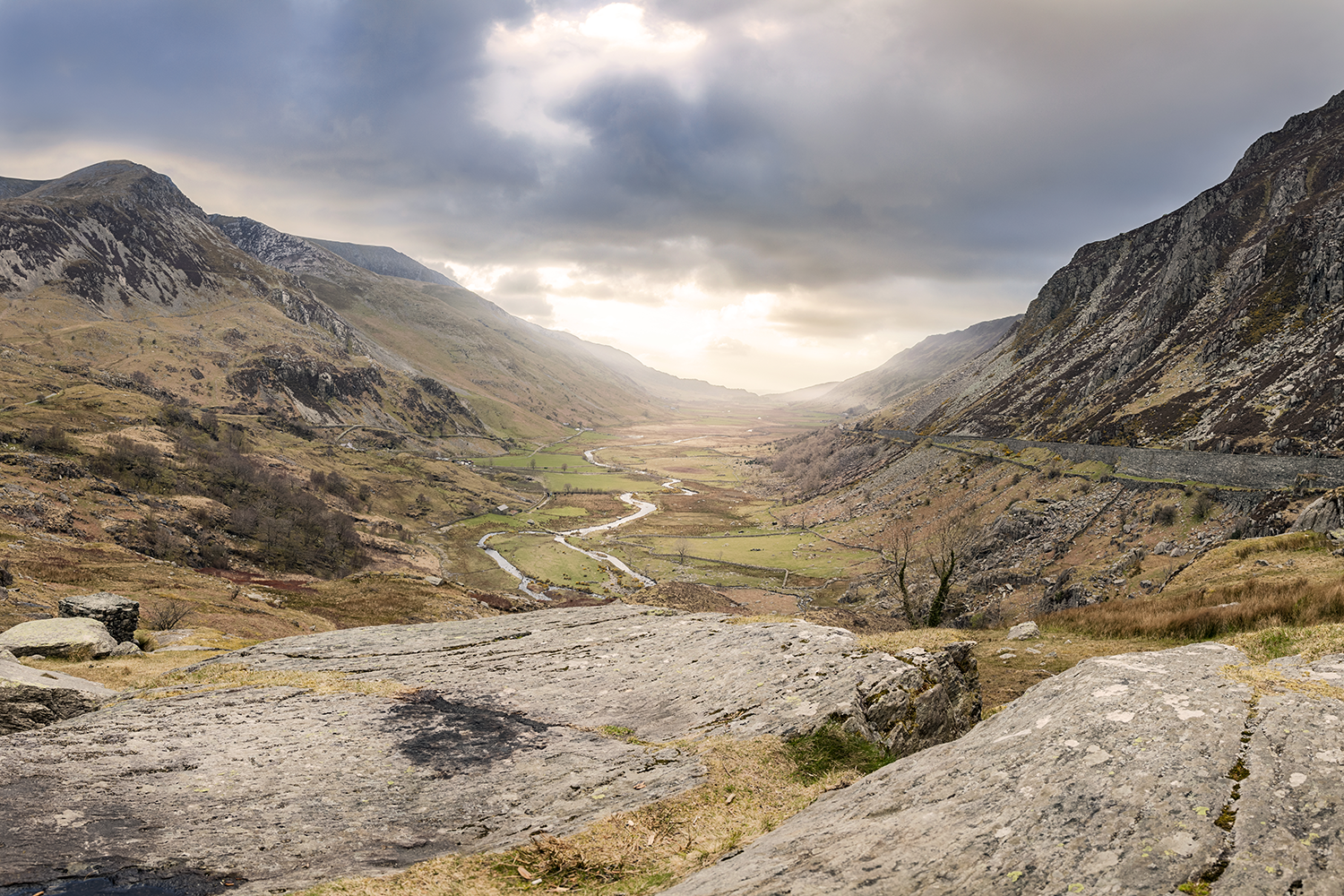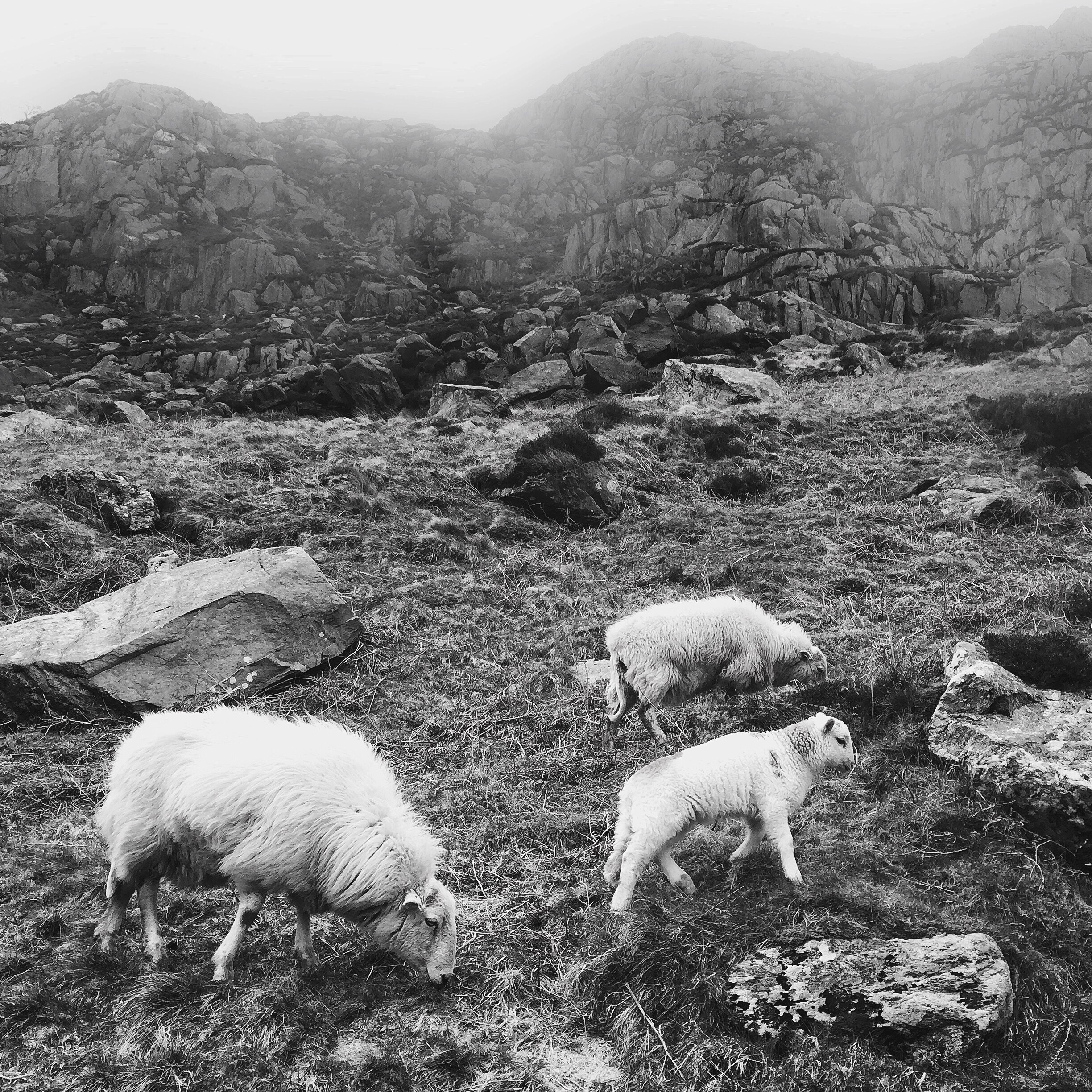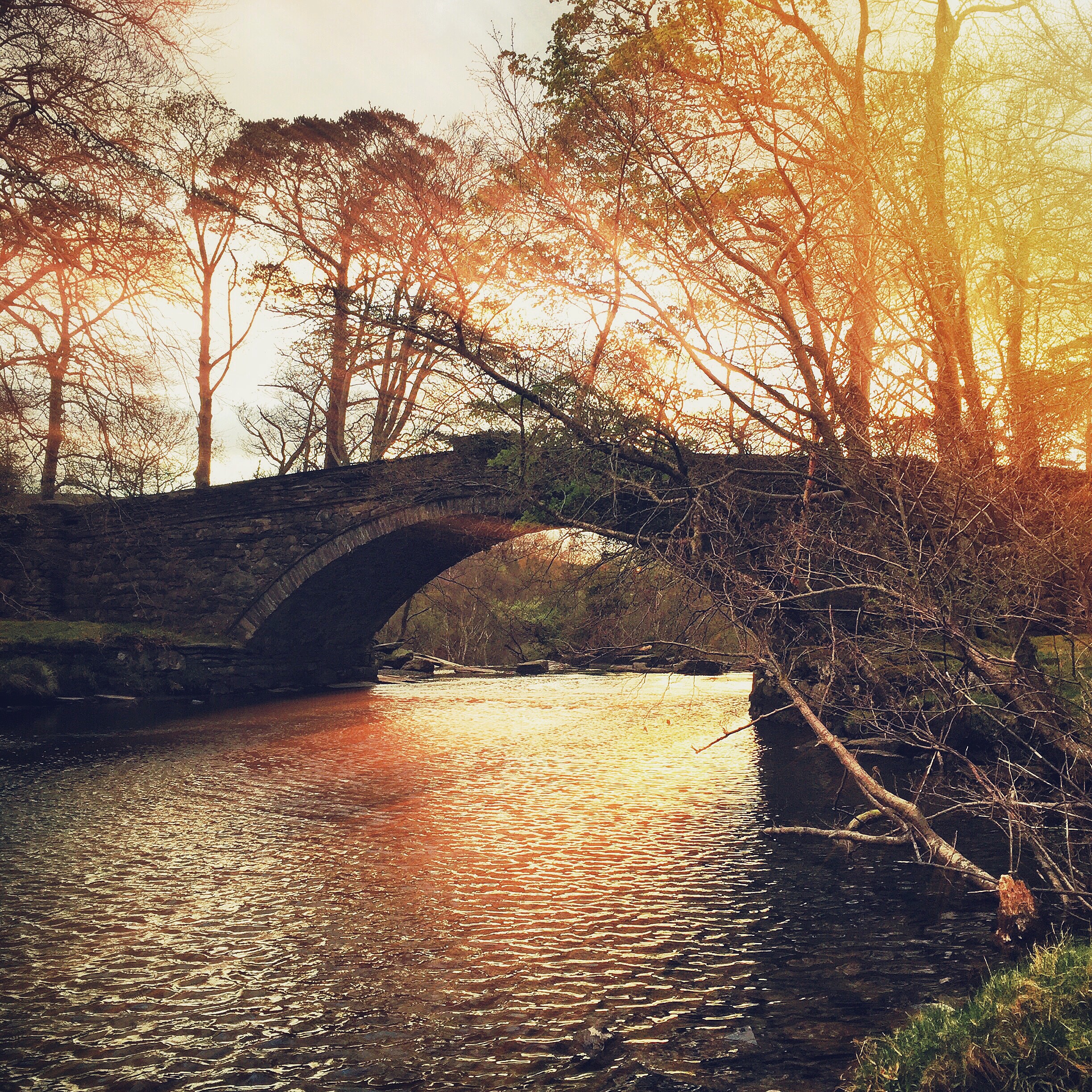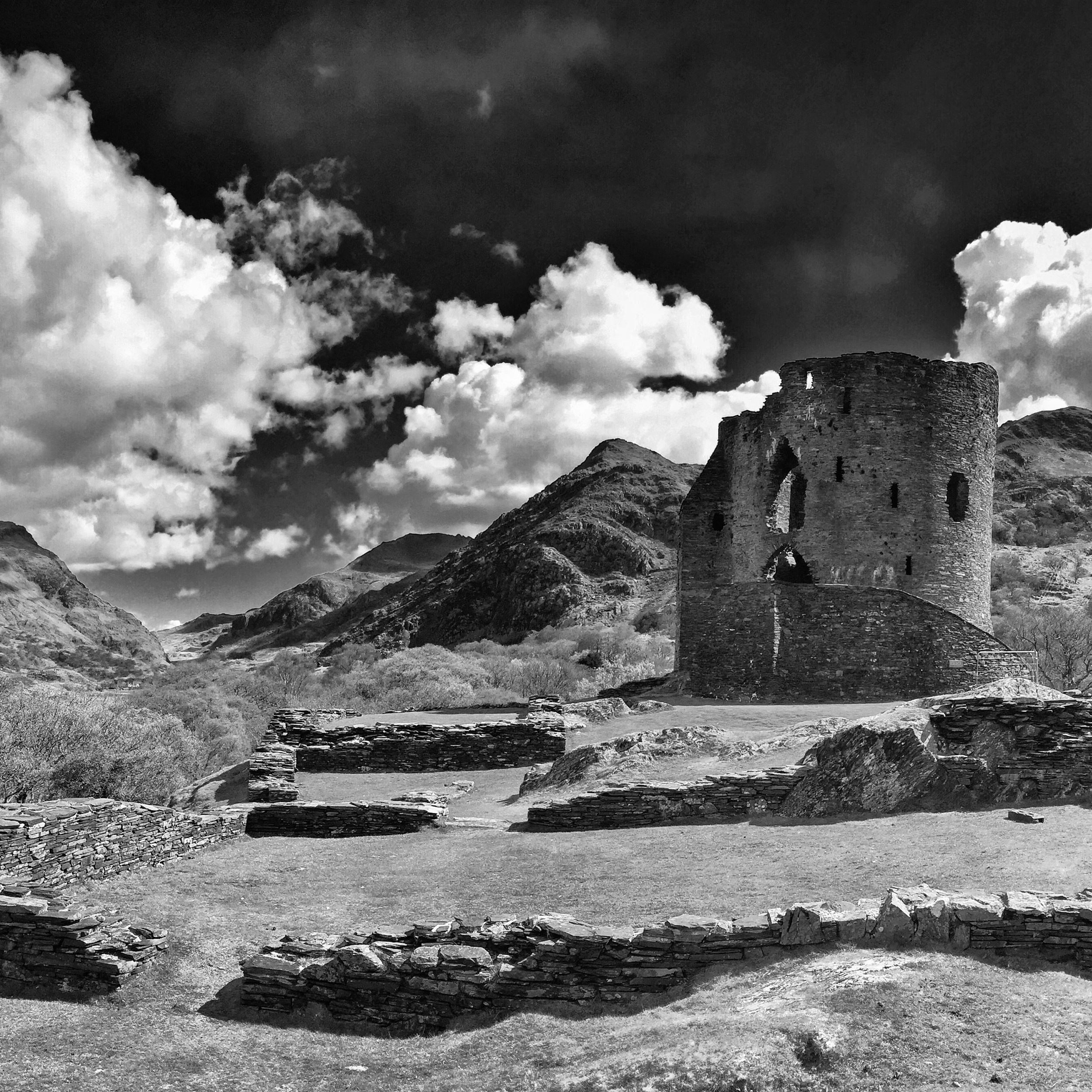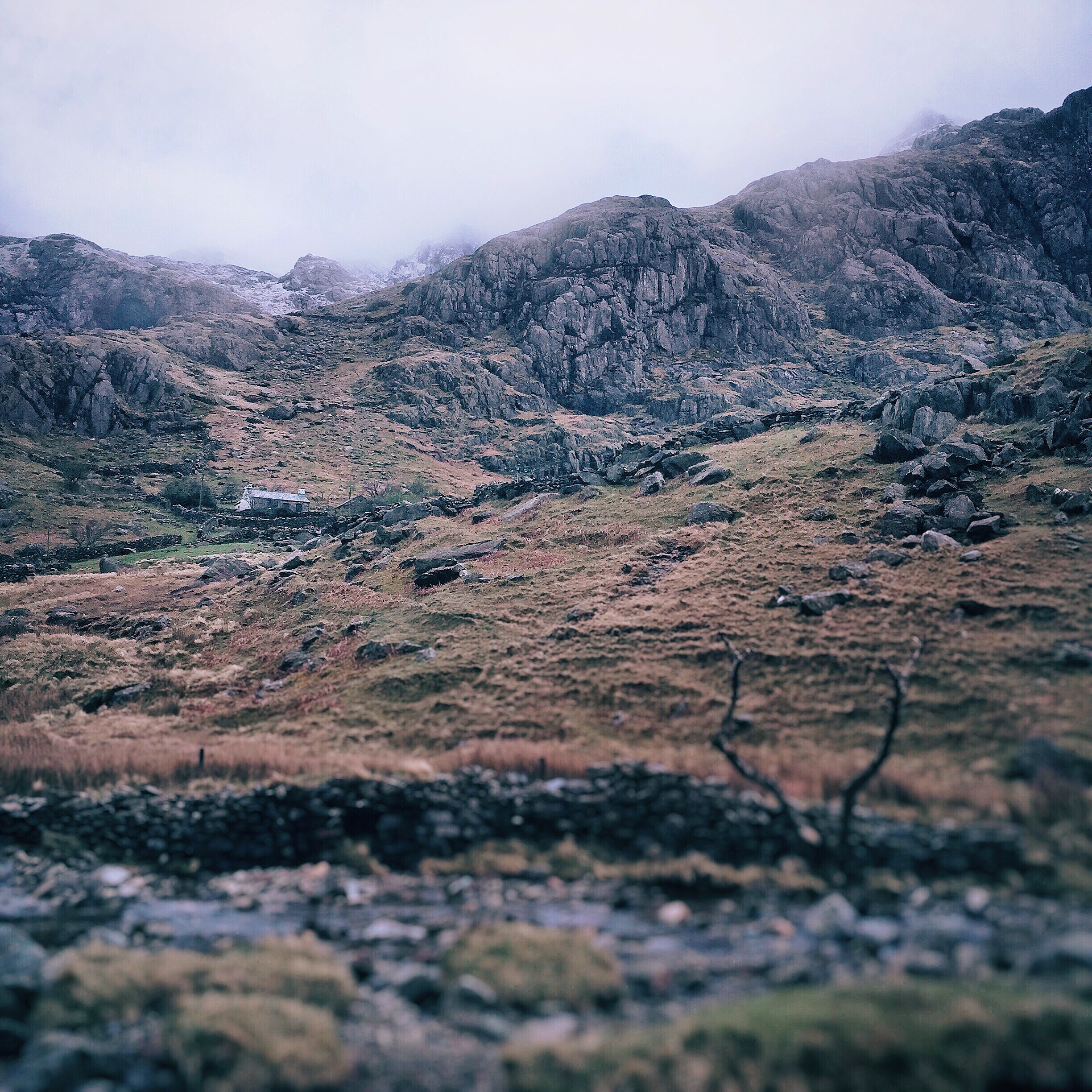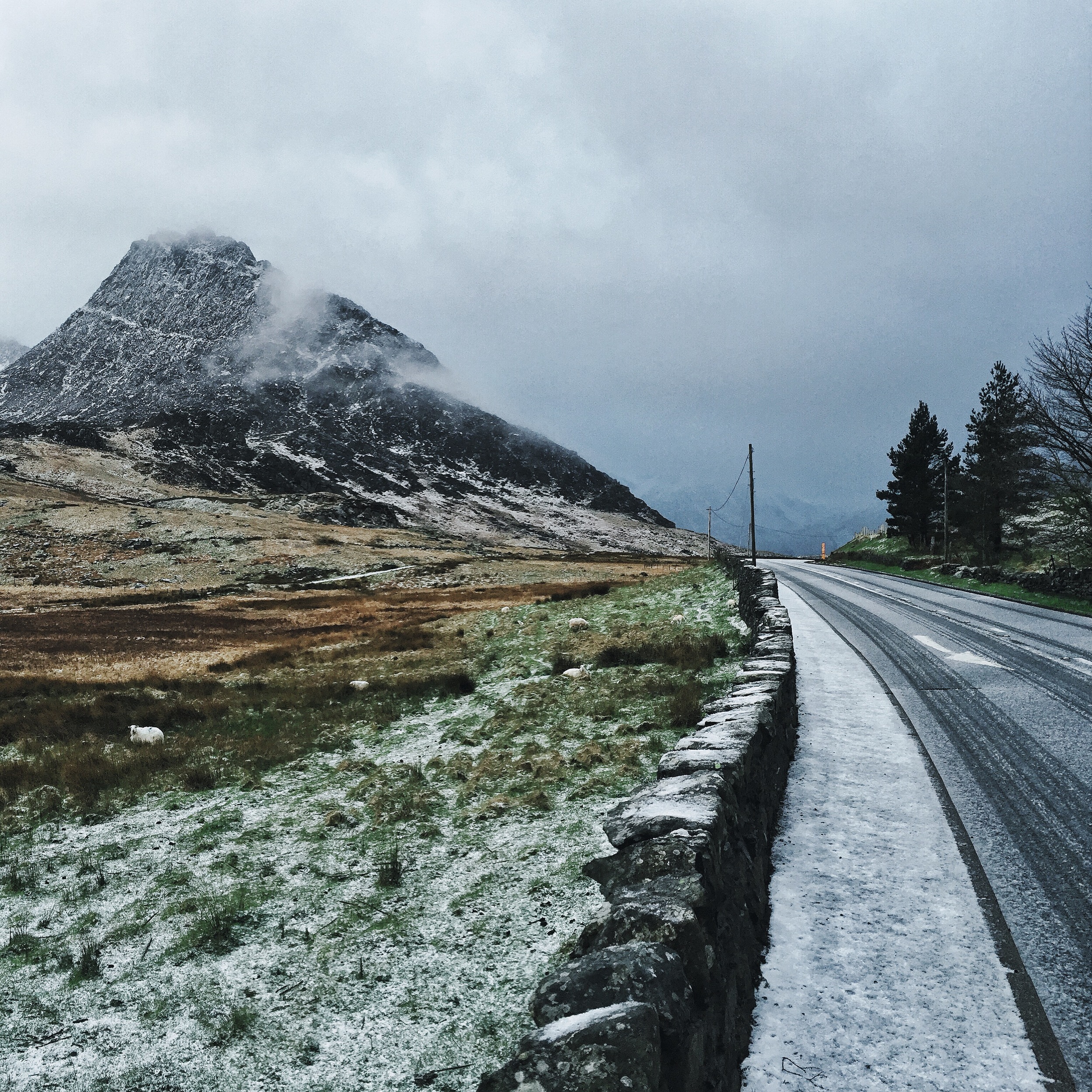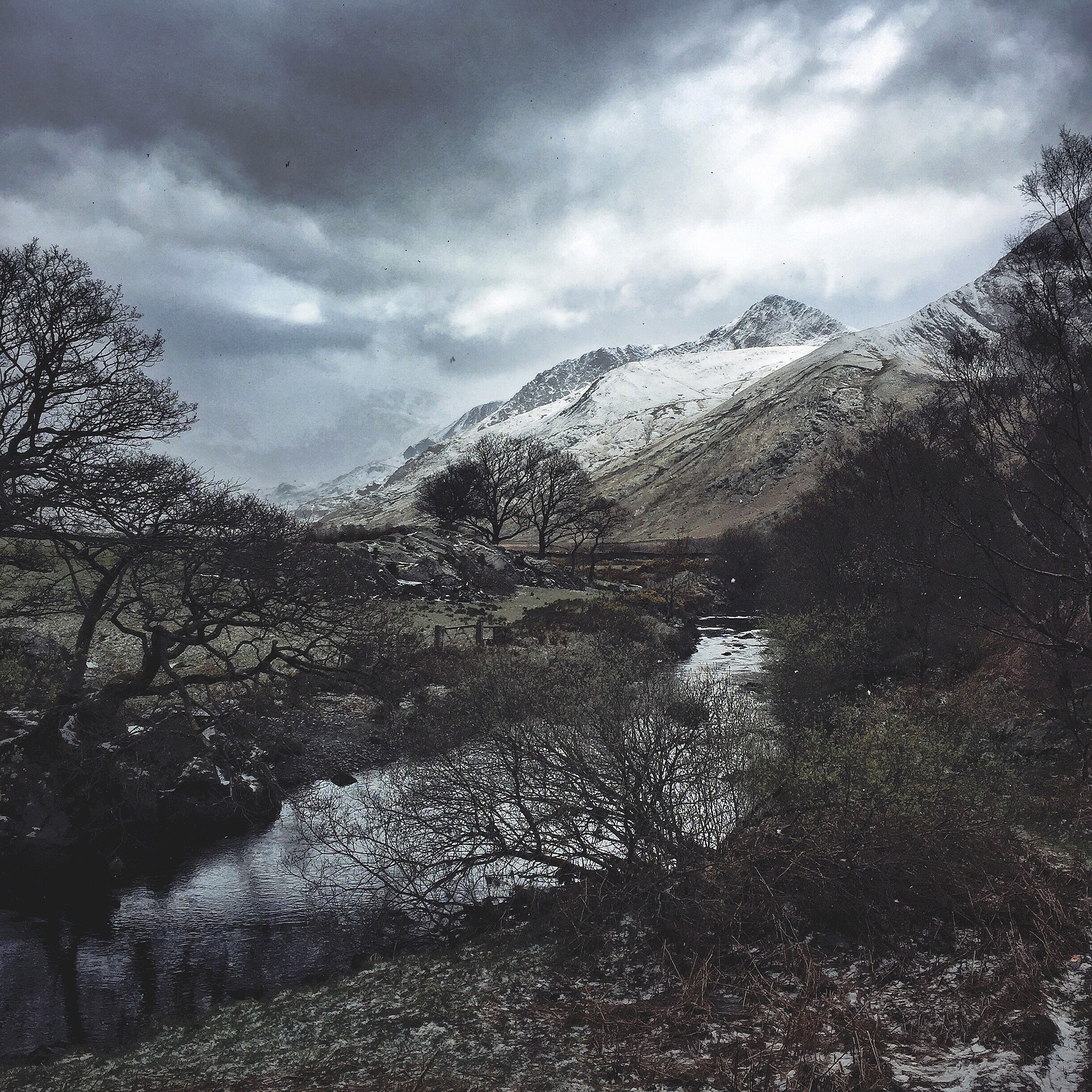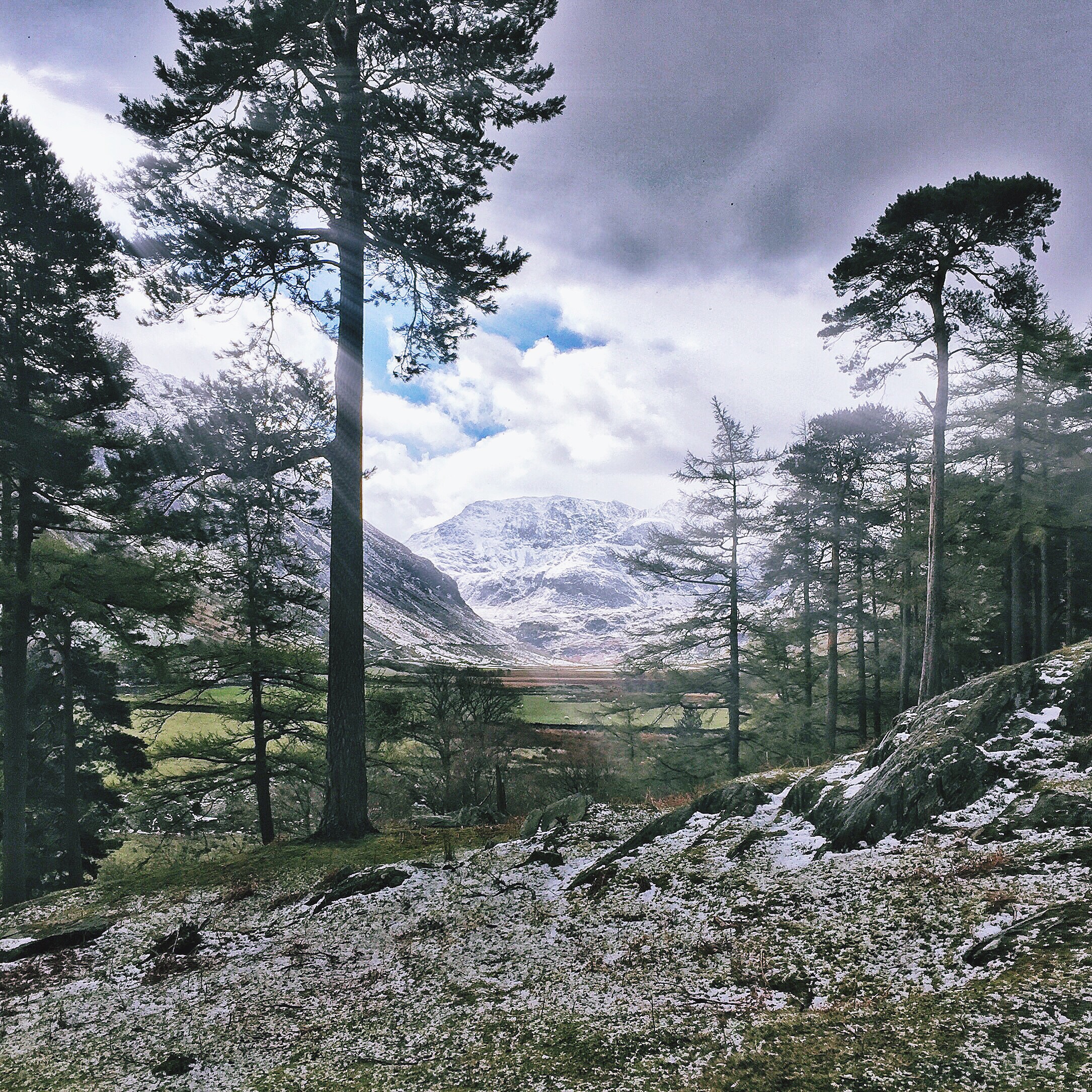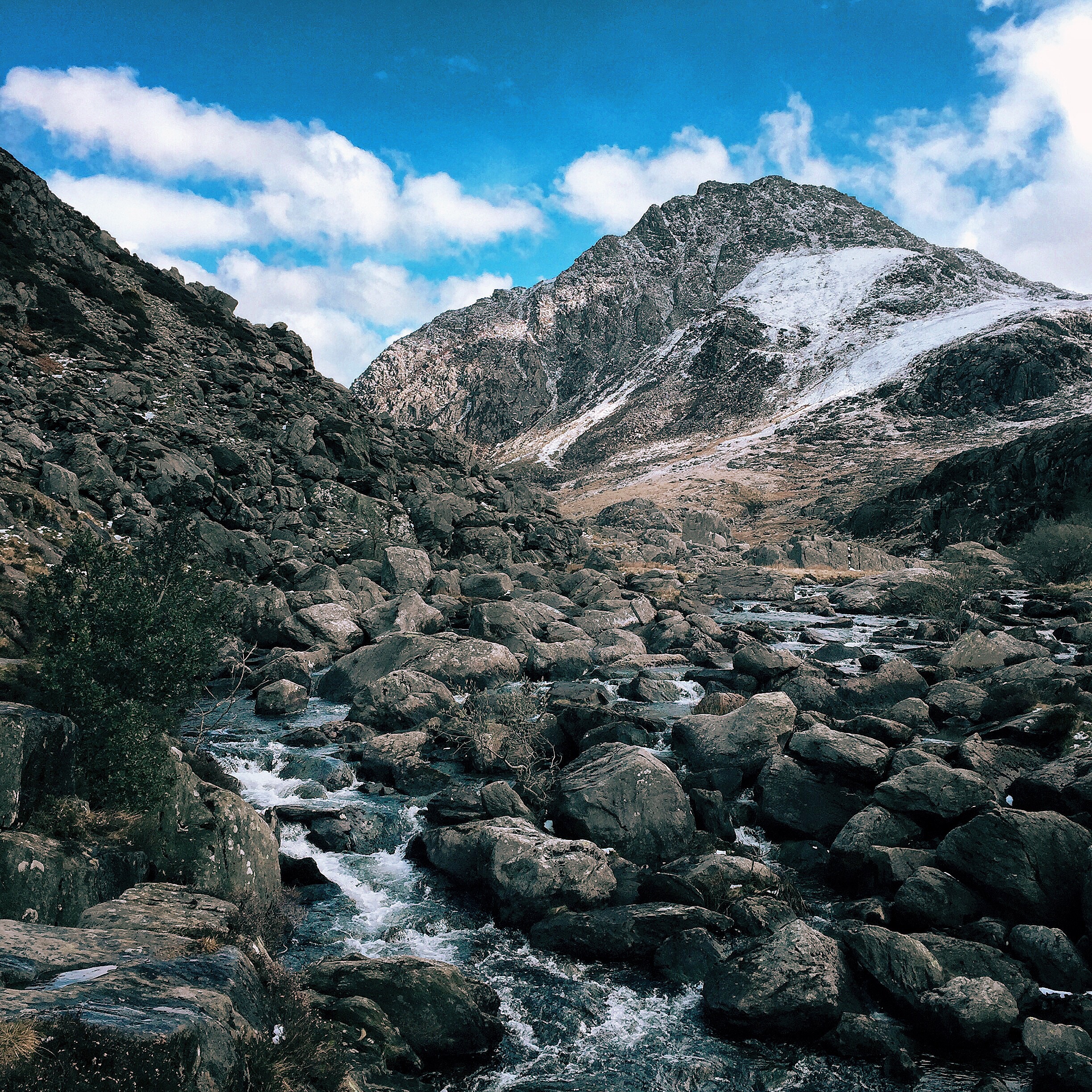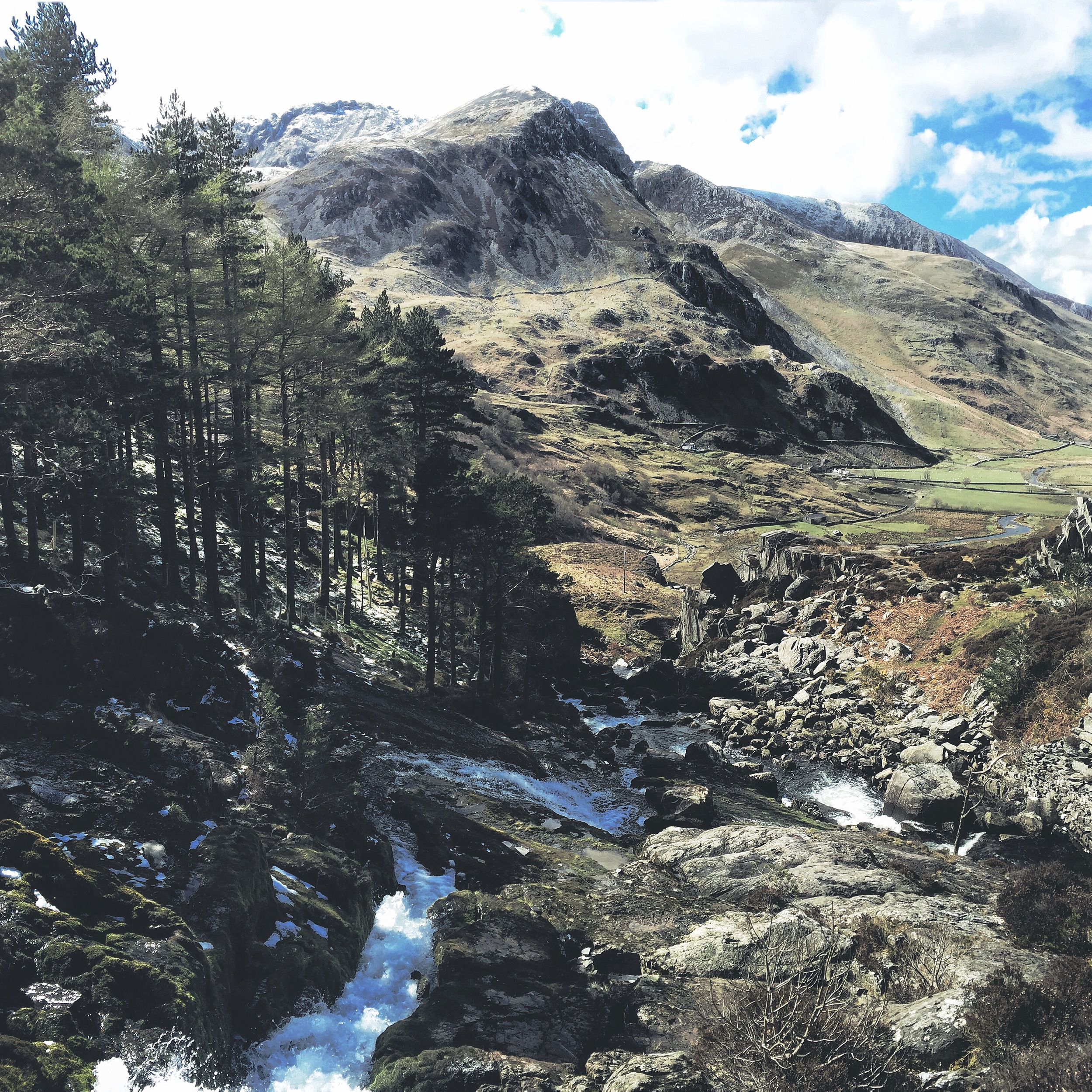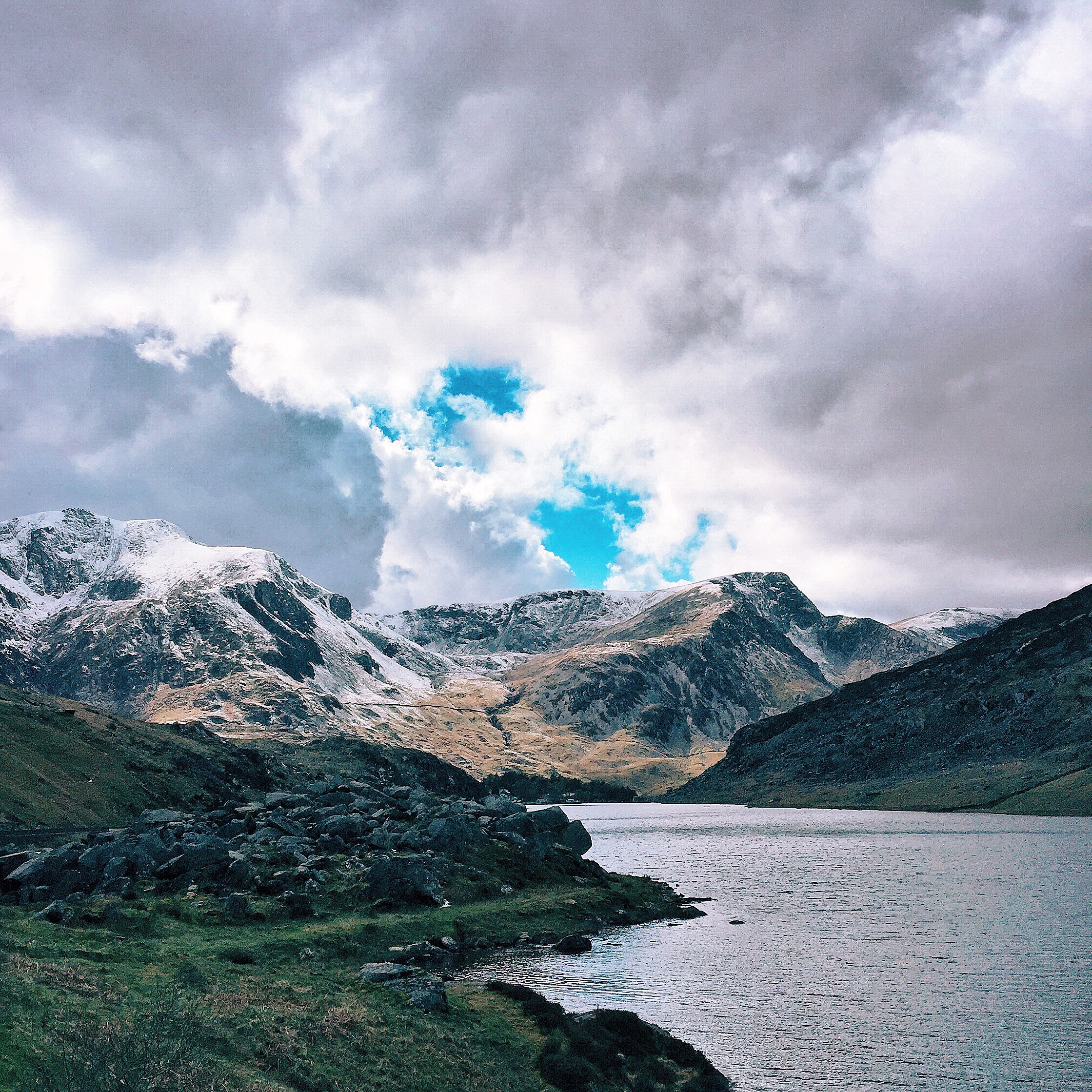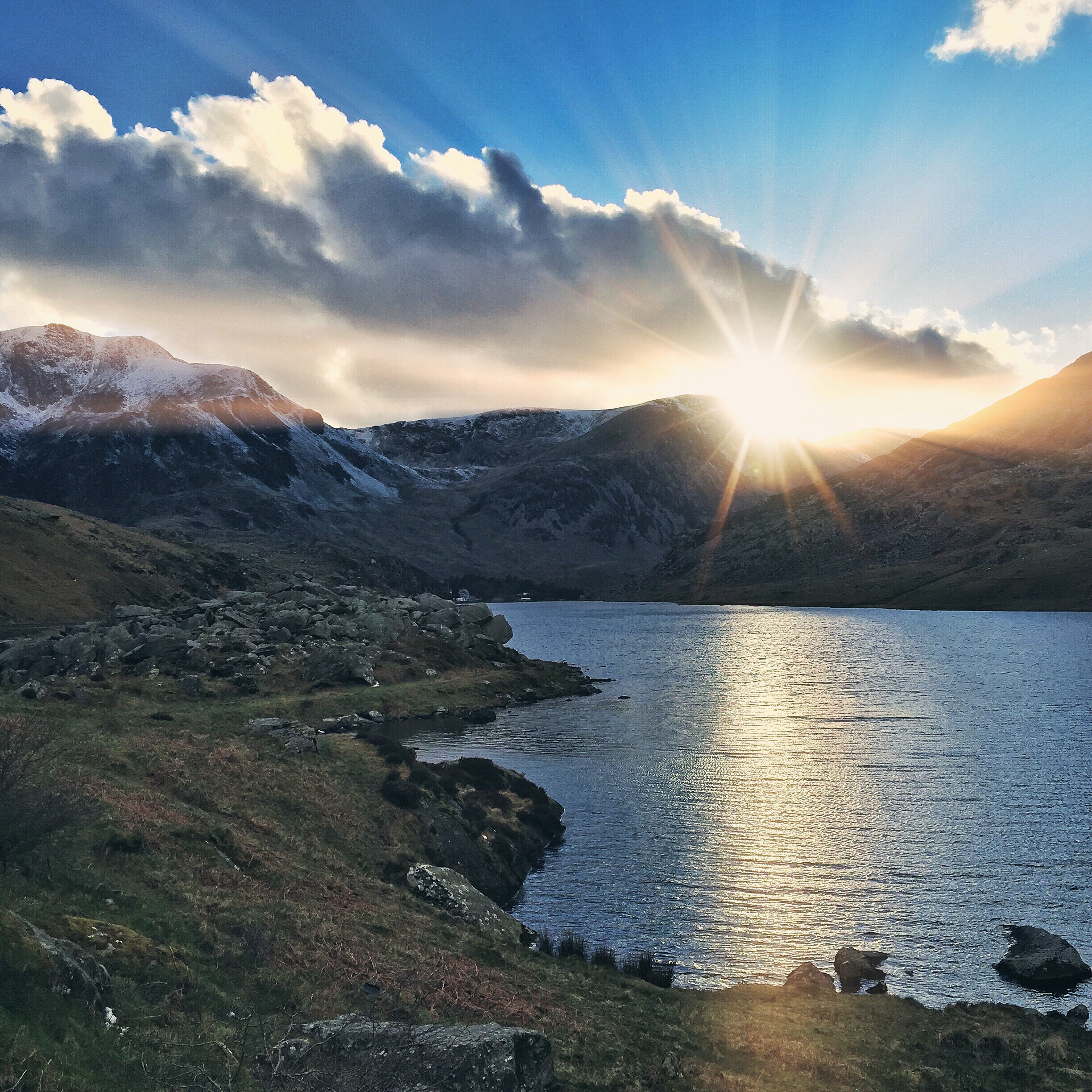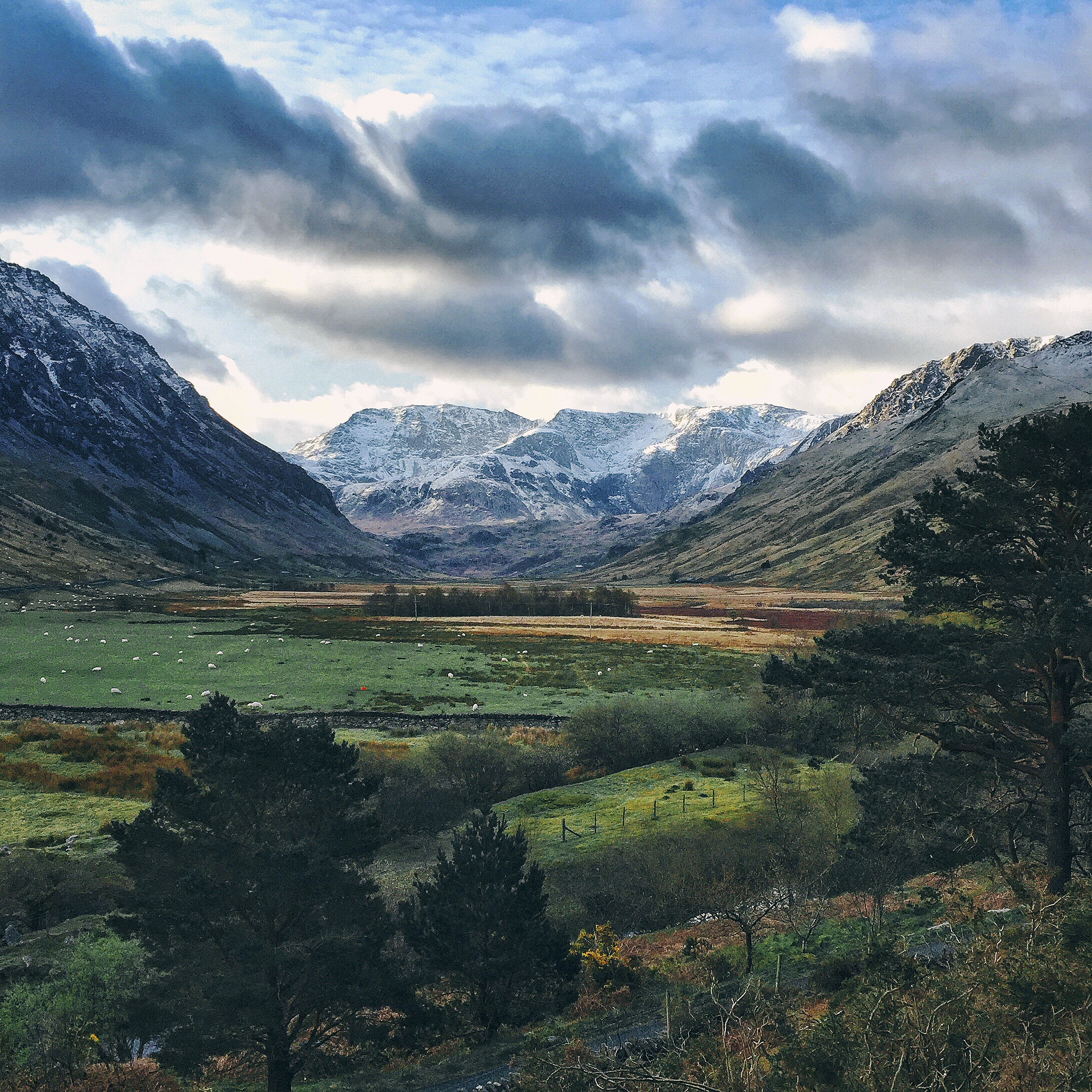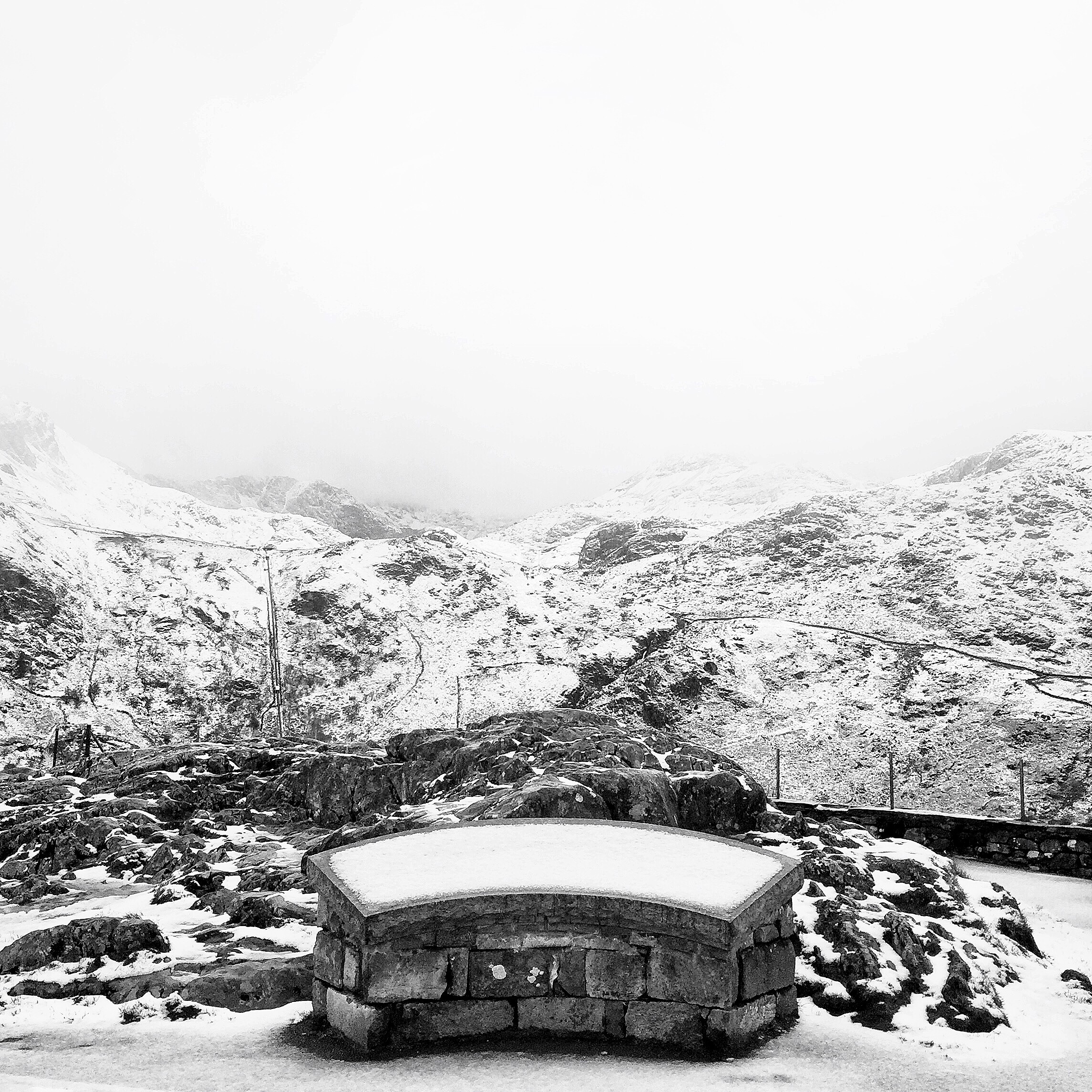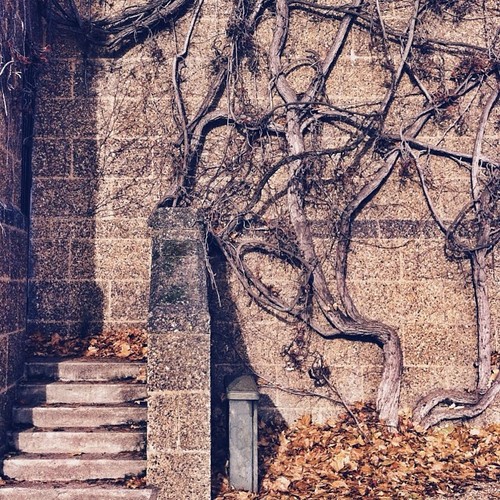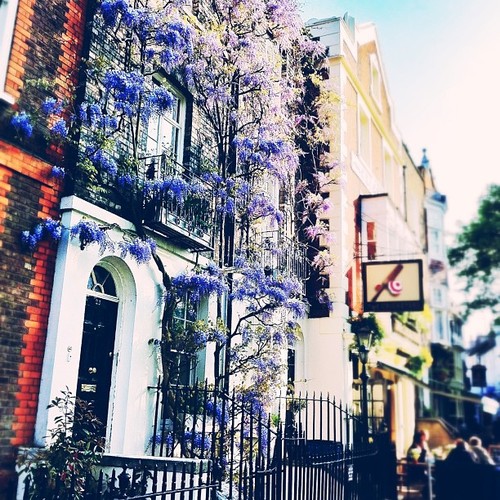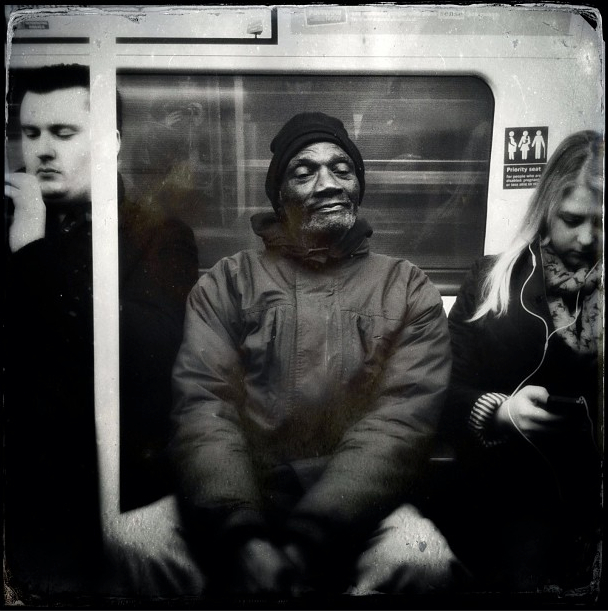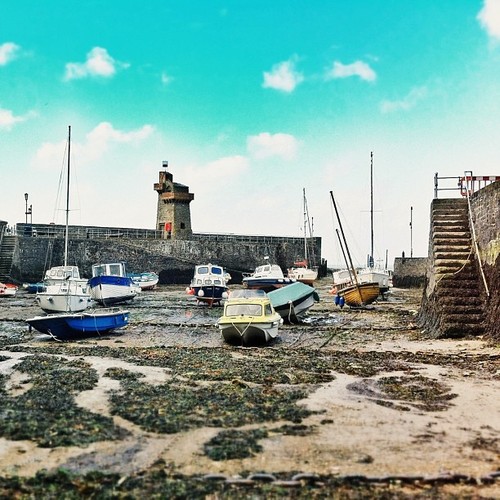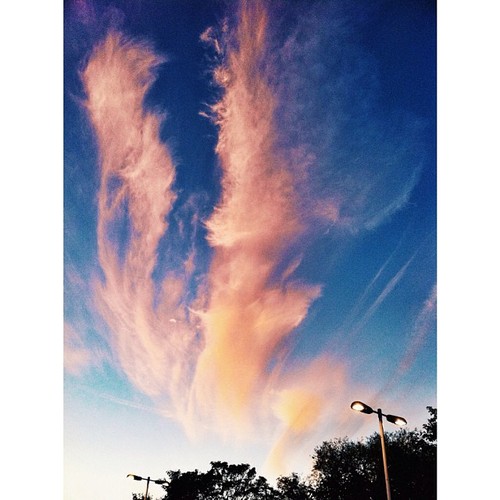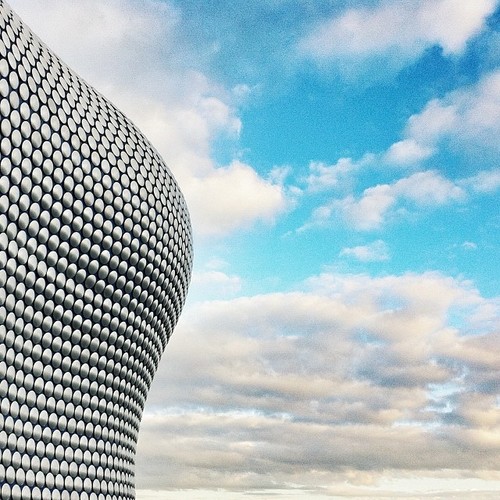How to be Authentic in your Creative Work
I recently took a few days off and travelled down to Lynmouth on the Devon Coast. Lately I've been thinking a lot about what it means to be authentically yourself in your photography, or filmmaking, or whatever your creative pursuits, so on top of taking photographs I decided to make a film with some of these thoughts.
I hope it challenges you to be brave enough to be yourself in your own work.
Advice on Printing your Images
I have never professionally printed any of my images before, which, having been a professional photographer for many years now, seems like a ridiculous fact.
To remedy this I decided to take 3 images from my recent shoot with the Himba Tribe, down to Genesis Imaging in London, and get them professionally printed. Mark Foxwell, their creative director, kindly gave me some time to share advice to camera for print virgins like myself.
I hope this video challenges you to get out and print one of your favourites.
Very special thanks to Mark and Gabrielle at Genesis Imaging: http://genesisimaging.co.uk/
How to create when you're just not 'feeling it'.
After reading Steven Pressfield's book, 'The War of Art', I decided to make this video sharing some of my own 'Resistances', and how I fight to overcome them so I can get back to creating.
I hope you find it encouraging:
Shooting 50mm on the Island of Gozo
I made this quick video while visiting friends on the Island of Gozo (Malta) recently.
I am prone to taking too much gear on trips, but this time, seeing as this was supposed to be time to relax, I thought I would just take my Canon 5DmkII and a Sigma 50mm prime.
Taking one focal length forces you to think more, and move more, in order to get the shots you want... and of course means a lighter bag, and grateful back muscles. Limiting yourself with one focal length for a trip forces you to think more creatively to compensate (zooms can make us lazy). Your legs have to become your zoom with a prime lens. If you want to exercise your photographic eye, this is often a good challenge to give yourself.
I also offer some thoughts on not needing the very latest gear in order to get good shots, and reasons why the Canon 5DmkII is still good enough for me.
I've included some of the shots I got, including some of the Good Friday procession in Rabat.
Enjoy.
How to shoot portraits outside your culture (featuring The Himba)
I put out a video recently (https://www.youtube.com/watch?v=MSiZHcmflX4&t=241s) talking about how to start moving your photography career in a particular direction. I asked myself what sort of photography really spoke to me, and in my case it was pretty obvious.
It was people photography.
Portraits.
Especially portraits of people from different contexts and with different stories to my own.
My photography heroes are Steve McCurry, Sebastiao Salgado, Jimmy Nelson and Joey L for his work in Africa, India and Syria. I understand that it’s a different era now and that grabbing a job at National Geographic is not a realistic option. I also know that no one is coming to knock on my door to hire me for this sort of work just because I would love to do it. There are no favours in this industry.
If I ever manage to make this sort of work my full time job it will be because I have already proved that I could produce quality imagery in this area. So I packed my bags and gear and headed to a country which has always held a special interest for me; Namibia. I went to the tribal homelands of the Himba people and organised through a local guide (the wonderful Vanessa) to head into one of the villages for golden hour, for two evenings in a row, to shoot portraits with them.
For the portraits I shot using my Canon 5DmkII and a Sigma Art 50mm f1.4. On top of this I was using a Tiffen Variable ND filter to be able to cut the light and keep the depth of field where I wanted it without overexposing.
The first evening I went in I shot all natural light with a large white reflector.
On the second evening I went in and shot mixing strobe and natural light using my Alien Bee 800 with Vagabond Mini battery pack, shot through a 1.5m Photek Softlighter. This had the desired effect of darkening the background and shaping the light on the face for a slightly more dramatic look.
The overall experience was amazing. I intend this to be the first of many trips, but I will likely always remember this one as important because it helped prove to myself that I can do this; that all the work I have put in to build up my skill set over the years has resulted in images like this. On my ever evolving photographic journey it has been great to discover that this is a valid direction for me, which is exciting because it’s one which I would get a great deal of fulfillment from.
Here’s to the journey ahead.
Enjoy the video:
Here are a selection of the images I managed to capture:
Winter in Cumbria (What I learned from my journey in photography)
On a recent photography break to Cumbria I took some time to film a video sharing my story. I wasn't always a photographer. In fact I had a totally different career in my 20's which just didn't work out. So, at 30, I found myself having to start a new career from scratch. I decided it might as well be something I loved and so I took the risk and began at the bottom as a photography freelancer. It wasn't easy, but this video gives you some of lessons I learned, and what to expect if you're thinking of taking a similar leap.
But I'll shut up now and just let you watch:
Taking Aim: Thoughts on directing your photography career
This is a short video I made with some thoughts about how to choose a direction for your long term photography career by paying attention to the photography which really speaks to you, creating a mood board, and getting out to build the portfolio of the work you really to be doing in ten years. Enjoy:
Become a better photographer through 'visual exercise'
As photographers it's very easy to fall down the deep, dark hole of gear lust; or to get lost in reams of techy info, thinking these things will make us better photographers. They may help you learn how to use the tools, but in the same way as owning a paint brush doesn't make you an artist, becoming a great photographer is about so much more.
The following video gives some of my thoughts on how to 'exercise visually', how to open your eyes to the world around, and how to become photo-aware.
I hope it inspires you to shoot more often, with more abandon, and to develop your photography as art, not science.
Enjoy, and share it on if you found it helpful.
The War in every Portrait
I created this video recently called, 'The war in every portrait.'
It's based on a quote I heard. Embarrassingly I can't remember where, and I've likely butchered by now but it said something like:
"Every portrait is a war between the sitter’s vanity and the photographer’s guile."
In the video I talk predominantly to portrait and headshot photographers about how to look beneath the exterior to capture the authentic person sitting in front of you. Using the example of Karsh's portrait of Churchill in '41 as a springboard I give some tips on making your subject feel comfortable, and a challenge to photographers to sit for their own portrait or headshot sessions to remind them how vulnerable it can feel, and to give them empathy when they shoot others.
But I'll shut up now and just let you watch:
If you enjoyed it, please share it on.
Here is a photo I shot of my wife during the making of this video:
...and here's one she took of me when we turned the tables:
Check her out, she's a very talented, high end retoucher (as well as a talented photographer, even though she won't admit it): www.sarahjeantucker.com
Till next time.
How to deal with criticism online
I had some time this weekend, so I shot this vlog with some thoughts on dealing with internet criticism and online trolling when you're starting out in photography, or indeed in any creative field where you're putting yourself out there.
I hope this short video serves as some encouragement to back your work when being attacked online. Enjoy, and share it on if you found it helpful:
Learning to risk again: A Landscape Photography Trip
Last week I packed my bags and headed off for a few days to Snowdonia in Wales. The idea was to just leave and shoot something completely different, outside my comfort zone, to keep photography fresh for myself and take it out of the daily grind. There was no guarantee the trip wouldn't be a waste as I'm not a professional landscape photographer by any means, but I think the best creativity will always come out when you are taking risks.
When I got home I edited together this little road trip movie / photography tutorial from the journey with some of the things I learnt, so I'll shut up now and let the video speak for itself:)
I hope you enjoy:
Here's a gallery of some of images I ended up with:
...and this is a selection of images I shot and edited on the iPhone 6 Plus while I was running around up there (editing apps used were Snapseed, Darkroom, Lens Distortions, Rays and Instagram):
Your turn.
8 Tips for any Photographer, with any Camera
For the start of 2016 I'm giving you 8 tips on how to take and make better images. To prove that this has nothing to do with how much fancy gear you have, all these tips can be applied to any camera, and all the example images were shot and edited using only my phone.
Tip 1: Teach yourself to recognise good light.
I’m putting this up front because I can’t emphasise it enough, and it’s something you can practice every minute of the day, with or without a camera. Photography means, ‘writing (graph) with light (photo)’. Any camera you own is only a light proof box which captures light coming in. Some are fancy, some are simple, but this is always the essence. The single biggest tip I can give you is ‘learn to recognise and appreciate good light', then capturing it becomes the easy part. Is the light coming in through the trees in a beautiful way? What is the colour of the light? Is it bouncing off a reflective surface and doing something interesting? Is it creating unique shadows? If you can learn to see good light you are halfway to becoming a good photographer.
Tip 2: Compose your shot.
There are many schools of thought on how to compose a photograph, but a solid basic principle to start with is the good old ‘rule of thirds’. You want to imagine breaking your frame up into 9 blocks of equal size, and the easy way to do this is to mentally draw two vertical and two horizontal lines across the thirds of the frame. Now to use this pattern in your framing you either want to compose any interesting vertical or horizontal lines on these imaginary thirds, or you want to place any points of interest on one of the four intersections of these lines. It sounds complicated but the idea will click quite quickly if you give it a go, and it will serve to get you thinking about how shapes intersect and arrange within the frame. On top of this it will give you a more pleasing composition than just pointing your camera straight at a subject. The trick then is to learn this, and other techniques which get you thinking about arranging elements within the frame, and then learn when to break the rules. Here are a couple of examples of using the rule of thirds:
Tip 3: Content is king.
It’s almost a cliche at this point but it’s as true as ever. You have to ask yourself what you’re shooting. What is your subject? Is it interesting? Is it too obvious to say that shooting something engaging will make for an engaging photo? It may be redundant but if you think your shots are too boring, the problem may be this simple. Shoot something which tells a story, or freezes a moment in time. That day the kids were playing with that pile of leaves. That light setting over those hills. That guy on the street in that crazy hat. Remember that what you put in front of the lens will make the photograph, not the camera. You can’t blame the gear. Better cameras only make incremental differences to the quality of the capture, but it cannot make up for a boring subject. A boring scene shot on the best camera in the world is still only a boring photo, but a compelling scene shot on a mobile phone can win awards.
Tip 4: Don’t neglect your background.
You may be out shooting a particular person or thing, but your subject will only make up a portion of your frame. Ask yourself what you are filling the rest of the frame with. By rotating around your subject a bit you will totally change the background they are set against in the composition. How bright or dark is the background? What is the dominant colour of the background? Does it serve to separate them and highlight what’s going on, or does your subject get lost against the scene behind them? If your background isn’t working, notice it, and shift position. You have a subject, now move and frame them to place them in the scene.
Tip 5: Look at something from a different angle.
We are used to viewing things from 5-6 feet off the ground but you may discover a unique shot if you can find a way to get above your subject, or shoot it from below somehow. Perhaps you can get right up close, or shoot it from an interesting angle. Remember to think outside the box and experiment with where you place the camera to give us a fresh vantage point on a familiar subject.
Tip 6: Catch the detail.
On top of shooting people and places, notice the little things. Keep your eye out for the small details we all walk past everyday. By getting in close with your camera, you could be giving us a glimpse into a world we never stop to notice. Think about textures in the concrete, patterns on the leaves, insects, shapes in bark. Most mobile phones today will allow you to get very close and maintain focus, with the added bonus that you will force the background out of focus, giving you that sexy blur for your shot which people associate with higher end cameras. Give it a go.
Tip 7: Look for lines.
Everywhere we go we are faced with lines. Telegraphs poles. The horizon. Chem trails in the sky. Tree trunks. Roads. Think about how you can use these lines to point out your subject or create an interesting shape in the frame. Sometimes you can use these lines to literally point at your subject by placing them at the convergence of these lines within the frame. Sometimes you can use the lines to create a frame around the subject. Start to notice the lines around you, and use them to your advantage.
Tip 8: Wait for the decisive moment.
This is where all the tips above come together in a moment. Many times people will put the camera to their eye to take one picture. For example, Mom wants to snap a picture of her kids playing in a stream. She lifts the camera, clicks, and thinks ‘job done’. But what if you watch a little longer, adjust your position, look at what the light is doing, observe how your subjects are moving, and wait for the moment something magical happens? This is the difference between simply taking a picture or actually making a picture. Henri Cartier-Bresson, who is considered the father of street photography, coined the phrase ‘the decisive moment’ to express that confluence of events which make a good shot. He would camp out in a spot where he knew the light was good and the composition worked, and then wait for the magic to happen. Obviously we don’t all have the time to shoot like this, but maybe his attitude helps us take a small step away from a 'quick snap' mentality, towards actually creating a memorable image by staying with the moment and remaining aware of all the elements we’ve spoken about, to create a unforgettable photograph.
Best of luck.
Share what you come up with.
Happy light-writing in 2016!
(and if you enjoyed these shots, follow me on Instagram: @seantuck)
To Share or Not to Share?
Over the last three weeks I have released a pretty comprehensive video series teaching you how to shoot large products. I did it because I saw a gap. When I began shooting large products I struggled to find anything online which gave much information on shooting and editing things like sofas and beds, so I decided that I would fill said gap.
My reasoning was two-fold:
- I genuinely wanted to contribute some knowledge to the pool which I have drawn from in so many other areas.
- I thought it would bring some nice exposure for me as a photographer, which it certainly has.
But I remember a moment in the planning stage asking myself, 'Am I giving away too much?' It was only a moment, but I did have that doubt. I wondered if I should be a good little Capitalist and charge, or if I should tuck my little bag of tricks back in my pocket and forget the idea altogether.
Anyway, I went ahead and shot them anyway, and they ended up on blogs like SLRLounge, Fstoppers, ISO1200 and Petapixel. The response was gratifying. And then the inevitable comments rolled in. Most were very kind, but one conversation popped up suggesting my earlier doubts may have been founded.
I'm going to reproduce it here for you because I think the debate is an interesting one. You'll see at the bottom where I landed on this issues of 'sharing vs not sharing' but there are some good comments made on both sides.
It started with:
“As a Marketing Director of a furniture company I was going to hire professional photographers and pay them to do all my product photography, but now it is much easier thanks to this tutorial!
This free tuorial will save me thousands of dollars! Thank you PetaPixel and Sean Tucker for posting this!
P.S.: why do photographers do these tutorials and potentially ruin their own (and everybody else’s) business? I would NEVER show how to make my furniture, what tools and machinery I use, etc. Thanks anyways but really... you should think twice before posting this sort of stuff... “likes” and “tweets” normally don’t pay the bills.”
This guy agreed:
“I hate to admit it but this guy’s right.
TV chefs teach us how to cook at home and make their living as TV “stars”... the REAL chefs keep their techniques to themselves and make their living AS CHEFS.
Photographers should do the same... just saying...”
Some people came to my defense and said:
“*Start sarcasm* Yeah, a few more years and everybody can cook delicious meals at home and all the restaurants will be out of business... *End sarcasm*
Hate to tell you (not really), but both you and Jeff are wrong. Even if you magically mangage to get as much experience and craft as a seasoned photographer solely from this tutorial, I still doubt your time would be best spend photographing. As a furniture craftsman, if you have the time to photograph and edit images this way instead of making furniture, business musn’t be going that great :/
So, if you sell one chair a week and have spare time, feel free to try out this new craft with Sean’s great tutorial. If you are good at what you do - making furniture - stick to that, and leave the part of photographing your work to someone who can do this better, faster and more consistently than you.”
Another person said:
“Just because someone shows you the gear that’s used, it doesn’t mean you know exactly how to use it properly. Go ahead and post how you make your furniture and what equipment you use… 99.9% of people watching will still not be able to replicate what you do.
The tools don’t make the carpenter, just like the camera does’t make the photographer.”
Finally my response was:
“Hi Jeff. Sean here. The guy from the video.
Let me be the first to welcome you to the photography community. We’re a generous bunch with our knowledge, by and large. Sites like this, and many others besides, are rammed full of enough information to get you started in any field of photography you chose. I for one didn’t study photography in a formal institution. Instead I had to reboot my career years ago, and so I embarked on a journey as a professional photographer and videographer; a feat made possible because I was able to learn from other generous photographers who went before me and were willing to share their skills with me online and in person.
I made a promise to myself way back then that I would endeavour to model the same generosity.
Secondly, if I am able to impart enough knowledge for you to shoot and edit as well as me, in one hour, then I’m not really a photographer worth very much anyway. You may find that this process is a little more tricky than I make it look on camera, and you may just end up giving me a call when you are completely stuck because it doesn’t work as neatly for you as it does for me. That’s the difference between a brief tutorial and years of experience: consistency, problem solving and ease. You will know well that if you give me a quick one hour lesson and show me the tools of your trade, and then let me loose in your workshop to build furniture, you will be having a quiet giggle to yourself in the corner watching my bumbling efforts. I may even find myself throwing in the towel, calling you over to rescue me, and appreciating the skill it takes to do what you do. I said at the start of this video, ‘these are (only) basic tips and tricks’. You may find yourself shooting much better images than you did in the past and ‘saving yourself thousands of dollars’; in which case ‘you’re welcome’. That would make me genuinely happy. But more than likely you’ll be picking up the phone and asking a professional to help you out, because now you realise how difficult this process is. Not my intent, but certainly a reality in my experience.
Maybe this makes me a useless Capitalist, but if success for me means never sharing what I know with others, guarding my ‘secrets’ and bowing to the all-powerful dollar above building into the community which has given me so much, then I’m happy to be a failure; because it’s only due to the willingness-to-share of other generous ‘failures’ that I am where I am today.
Thanks genuinely for your comments. They really made me think.”
Any thoughts of your own on this issue?
Observe where you Gravitate
I follow too many blogs. I read too much techy info and lust after too much gear. Whilst the intention is to get as much info as I can to become a better photographer, I think it's possible get to the stage where all this is just noise. You have a mountain of facts and techniques to draw on, but zero direction. Somewhere along the way I believed that the more I found out, the more my specific 'photography trajectory' would just organically slide into focus.
Am I to be a headshot photographer, fashion photographer, event photographer, journo photographer, still life photographer? Reading blogs hasn't made that clearer to me. In fact, if anything, it keeps me interested in all of them.
I've felt this keenly in the recent, busy months. I've shot all of the above with models, and products, and street, and documentary, and shows, and weddings... but the problem is I don't have any clear direction for the future. Am I going to just shoot a bit of everything forever, being a photographic 'jack-of-all-trades'?
Then I got to thinking about who my photography heroes are. Let me visually introduce you to a few of them:
Gregory Heisler
Steve McCurry
www.stevemccurry.com
Don McCullin
www.contactpressimages.com/photographers/mccullin/mccullin_bio.html
Joey L (specifically his Africa and Varanasi Portraits)
www.joeyl.com
While I was thinking about these guys who are an inspiration to me, two things were immediately clear.
1. These photographers are known for a style, which includes subject matter, composition, editing etc etc. They don't 'also shoot weddings'. These guys do one thing very, very well.
At some point I have to choose what it is I shoot. I may feel right now that I need to shoot a bit of everything to keep the scant work flowing in, but the irony is that if I focused it down I would likely pick up more consistent work in the long run because I am the go-to guy for 'x'... if I'm good enough.
I suppose the old saying, "if you aim at nothing, you'll hit it every time" applies here.
I will consider myself a success when I have a smaller website, with less material on it, not more. I will have a defined idea of who I am as a photographer when I have ceased chasing the blogs for techniques, tricks, tips and tools, and have locked into something I love and put my head down to be the best at it I can be.
2. So the obvious question is what will I choose? What do I want to shoot? What resonates with me? it might be obvious to you because I laid it out in this post, but it dawned on me slowly. I looked at these images from my heroes and realised that the images which resonate with me are actually very specific.
It's people photography, and the sort of people photography where the individuals have stories etched into their features.
It's photography which gets in close. It's capturing subjects willing to be vulnerable enough to stare down the lens at you and offer you a bit of themselves to freeze in your frame.
These are the shots I want to be taking. If I could choose (and I must choose) what my photography will become, this would be it.
I know that this sort of photography isn't lucrative any more. I know that this sort of journalism is going through huge changes which leave less and less opportunities to make a career out of it, but I can't help it. This is the stuff which speaks to me.
So I need to try. I need to work out ways to overcome my shyness in shooting strangers. I need to find a style which I can own, and then keep it simple. I need to invest time and energy, because it's work the risk.
I suppose the challenge I want to leave with you, especially if, like me, you are struggling to find a direction for your work to focus on: look at your heroes. There is likely a clear thread there staring you in the face, which you just need to pick up and follow. Start to hone in on shooting the work which really resonates with you.
I still don't know the way forward, but having a direction to face, even without having taken the first step yet, feels like huge progress.
My Most-Used Camera
No surprises: it's my phone.
I don't think I'm over stating it when I say that my phone has contributed more to building a photographic style than any other camera I've ever owned, and there are two big reasons for that.
Firstly, it gives me permission to shoot more 'carelessly'.
When I'm taking shots on my phone I'm not shooting for a client but just for the sheer joy of shooting, and if it doesn't come out that well I can always delete it; or post it anyway and just blame the short falls on the phone. I am giving myself the freedom to be less anal, which as a perfectionist I need, and It opens my eye to the ‘happy accident’, which isn't something I have the luxury to spend time experimenting with on a shoot. I also find that once I have tried out braver shots on my phone, and seen that they are working, I then have the confidence to incorporate those ideas into pro shoots.
I know many photographers will look down on the use of ‘automatic settings’ and the often ‘over edited’ finish of mobile phone images, but this isn’t meant to be ‘perfect photography’ in my view, but rather catching the moments we often miss trying to set up our DSLR’s and lighting, if we even brought them with that day. This isn't about planned shots with the best gear, it's reactive photography.
I think phone photography today is similar to the Lomography revolution of the early 80’s. People began picking up inexpensive, plastic film cameras with light leeks and crappy exposure because they were small, cheap and fun to shoot with. The idea was to shoot often, and ‘from the hip’, almost in antithesis to pro photography. In fact I think many of the top 10 rules of Lomography relate directly to iPhoneography. Check them out:
1. Take your camera everywhere you go
2. Use it any time – day and night
3. Lomography is not an interference in your life, but part of it
4. Try the shot from the hip
5. Approach the objects of your Lomographic desire as close as possible
6. Don't think
7. Be fast
8. You don't have to know beforehand what you captured on film
9. Afterwards either
10. Don't worry about any rules
The spirit seems the same to me. This is organic, reactive, even viral photography.
The second reason is that my phone is the camera which is always with me.
It's a way to live, photographically, in the now. My phone burns a hole in my pocket all day, every day, reminding me to keep my eyes open for the next shot, and knowing this in the back of my mind I am more conscious of my surroundings at all times. It means I am constantly training my eye, and I'm always on the lookout for an interesting scene, or light, or subject. This kind of photo-awareness stands me in good stead for the days I do pick up my DSLR’s to shoot more deliberately. I find I notice more, and have a whole host of new angles and creative ideas on tap.
It's no secret that the image quality isn't great on any mobile phone (no not even your 41 mega pixel Nokia). The dynamic range is wafer thin, depth of field is always as deep as the ocean unless your subject is pressed up against the lens, and overall the shots make the pixel peepers physically cringe. No one is suggesting that a mobile phone camera can compete with a pro camera for quality, but if I have the option to take a good photo on a bad camera, or take no photo at all, I would rather take the shot.
I suppose this comes down to the old battle between kit vs content. Which is more important?
I have this discussion with photographers regularly, and it often turns into a heated debate.
Don't get me wrong; gear helps. I can usually tell whether a shot has been taken with a point and shoot, a cropped sensored DSLR, a full frame DSLR, or even a Medium Format. But the fact still remains that a great camera in the hands of a bad photographer will be useless. It takes a talented photographer to see and capture the moment with good skill and composition. I for one, would rather look at an image shot by a great photographer on a bad camera, than an image shot by an amateur using the best gear in the world.
Photographers have gone on about it since Henri Cartier-Bresson was banging on about “The Decisive Moment” in 1952. If you point your camera at disinteresting things, even if you know your settings and rules of composition, you will have a disinteresting photograph. You have to become a student of ‘life’ and ‘light’ in order to catch the moments which matter, and which say something. We see mountains of photography everyday through our friends on Facebook, but much of it says nothing. Great photography shows you a moment, a look, a scene which surprises you with a response.
So I would say work on your 'eye' first, and there are few ways better to do that than shoot, shoot, shoot. Start getting your 10, 000 hours under your belt. Get out there and look for ‘the moment’ and use whatever you have on you to catch it. If you're not happy with it, delete it, but the mere act of shooting it will build photographic muscle reflex in learning both to see and capture.
And the tool to help you learn how to see, and which gives you permission to capture 'carelessly' and often, is likely sitting in your pocket right now.
For those who I know will be interested, I shoot on an iPhone 4 and my go-to editing apps are:
Snapseed and PicsPlay Pro for more controlled editing.
Camera+ but only really the amazing ‘Clarity’ function.
Facetune for basic retouching.
VSCO Cam to add some vintage film tones.
Mextures for light leaks and destressed effects.
Perfect B&W if I am going the Black and White route.
Big Lens occasionally to fake some depth of field.
Over Text + Photo to add text over the image.
Photosynth for panoramas.
Instagram, but only to post and rarely to edit.
PicFrame and Phoster for some fun presentation options.
If you want to take a look through my iPhoneography visit www.seantuckiphone.tumblr.com or follow me on Instagram: @seantuck.
Finding Your Vibe
A few weeks ago I was asked by good friends of mine to do a "Bump Shoot", or "Maternity Shoot".
I've never done one before so I agreed, albeit with a bit of trepidation. After all, I'm a single dude with no family of my own, so would I have the emotional involvement to be able to capture this important life stage for this couple?
I think at the end of the day I did ok.
We ran through a series of shots indoors, working off my iPad and a Pinterest Board which we had compiled together as a reference. I tried a few light set ups and attempted to replicate some of the shots with the limited space we had available, but I didn't really feel like things were clicking. I knew I had enough to go on, but I was keeping an eye out for golden hour because I knew they had beatific surroundings which would really offer us some gems if the light would only play ball.
And it did.
For those not familiar with the term, Golden Hour is a photography term for the first and last hour of sunlight in a day. Obviously it's often not strictly an hour, but the point is that at sunrise and sunset the quality of light is softer, with less harsh shadows being cast, which makes for more diffuse light and flattering pictures.
I use a great little app called "Sol", which tells me the exact times for golden hour each day based on my location and time of year. It really comes in handy with planning shoots.
For example this screen grab is telling me the best time to shoot today, here in South West England is between 15:06 and 16:29.
The evening in question we had a beautifully rich, orange sunset which played so well in the golden fields behind their house.
We walked around for a good 2 hours, well into 'Civil Dusk' and got some really great light. Leanne and Conan were both troopers, being willing to trudge some distance to search for good locations, not to mention Leanne being willing to lie down in some very uncomfortable stubbly grass to get some beautiful shots in the newly manicured fields.
So all in all I was happy with the results at the end of the day, but I did end up driving home in my car wondering, "Did I just do my first maternity shoot, or did I just do another model shoot with someone who happens to be pregnant?"
I suppose I was questioning whether I shot on brief or not. Did I get the vibe right? As I played the shots back through in my head they didn't feel like other maternity shoots I had seen fellow photographers post. Had I messed up?
I suppose this is the tricky part. Was what I had produced a 'maternity shoot in my style', or a missed mark by unprepared portrait photographer falling back on tried techniques? I think there is a fine line between deliberate stylistic choices, and a lazy reliance on your usual bag of tricks.
A very good photographer friend of mine did make the comment, after seeing the photos, that they 'weren't smiling', and this was supposed to be a 'happy event'. I suppose the insinuation was that I should have been getting them to smile and laugh throughout to give the sense of 'joy' which comes with birth. Did he say that because those are his stylistic choices, or because I had done it wrong somehow?
That got me thinking some more: I'm not really a 'smiley' photographer. Everyone knows how mother's feel about their imminent children arriving. I don't believe that we need to go through painful hours of me cracking lame jokes until one lands and I can catch that moment of 'genuine' joy. Maybe it's a personality thing, and I am an introvert so I prefer a more contemplative style of photography. I think even if I went to the shoot with this advice in mind I still would have aimed for the same vibe.
I remember when I shot for a company a few years ago as their in house photographer I was constantly criticised for not getting people smiling and laughing in shots. They wanted me to paint this picture that around the office everyone was always joking and laughing, which they obviously weren't, and to be honest those weren't the shots that interested me. It took me ages to own that that just wasn't my vibe, and it doesn't make me wrong, or a bad photographer, it just meant I had to work against my natural grain to meet the brief.
Now I understand that my more sober, thoughtful vibe may not be everyone's cup of tea, but at some point, with my own work, I either have to own it and make it the best it can be, or spend my career pretending to shoot like other people.
So this is my journey at the mo: to define what my vibe is and move away from the generic feel of my shots to give them more character. I may lose business that way because it doesn't appeal to everyone's taste, but I have to hope that those who latch on to my ever-defining style will be loyal followers and effective evangelists in helping me get the word out about my work.
NOTE: Thanks to the amazing Sarah Howse for an awesome job retouching images 1, 2, 3, 4 and 6. Check out her stuff here, and hire her: http://sarahjhowse.wix.com/sarah-howse-editing ... and I'm not just saying that because she's my partner. She's bloody good. You can also read more about her under the 'retouching' menu link above.
Here are more shots from the day:
Wells Blog
Duis mollis, est non commodo luctus, nisi erat porttitor ligula, eget lacinia odio sem nec elit. Maecenas faucibus mollis interdum. Nulla vitae elit libero, a pharetra augue.










